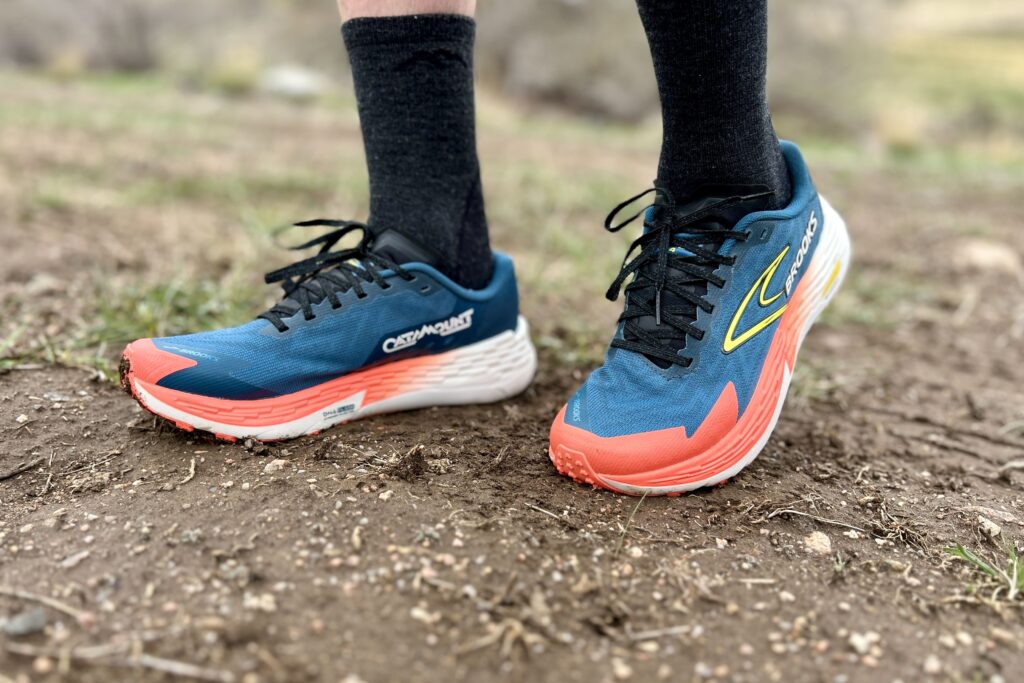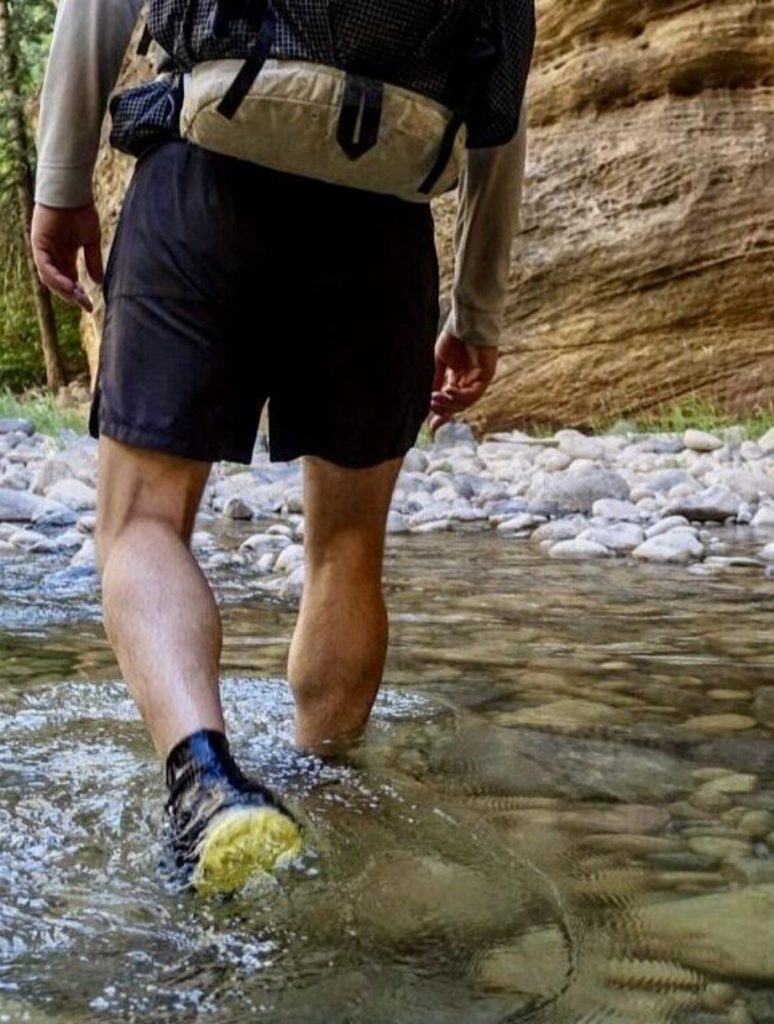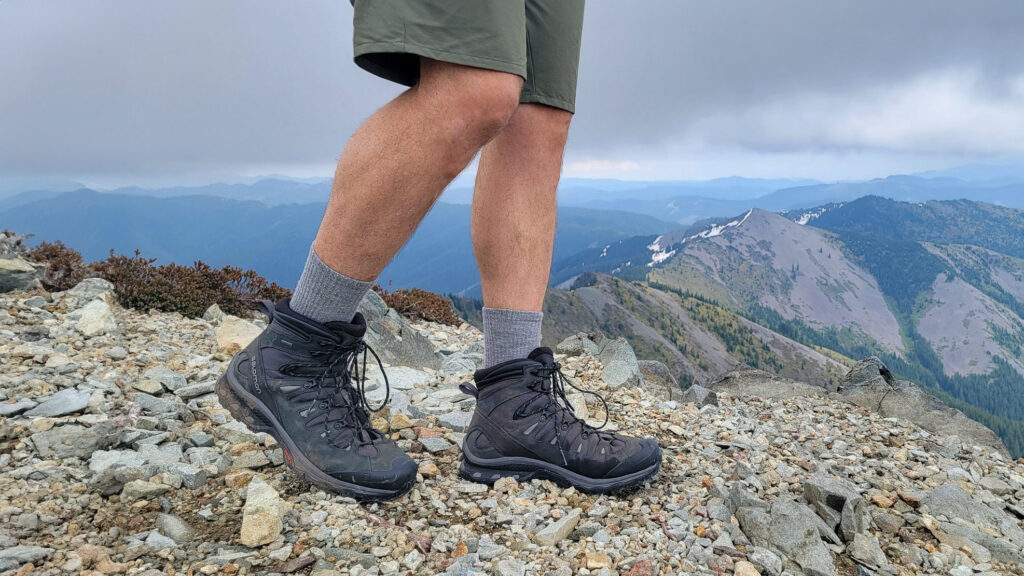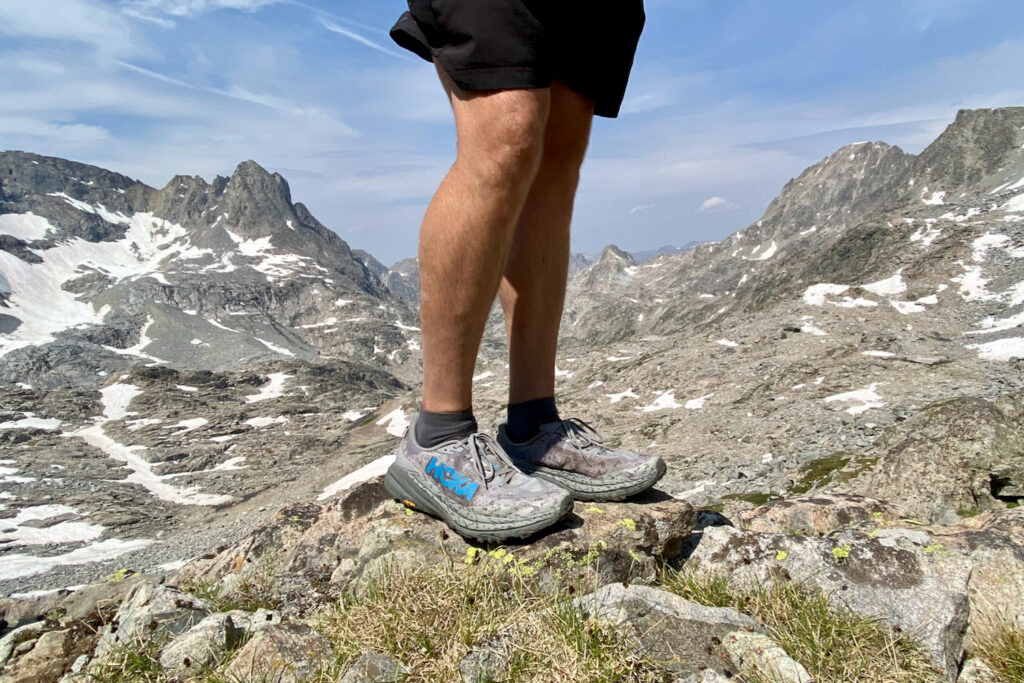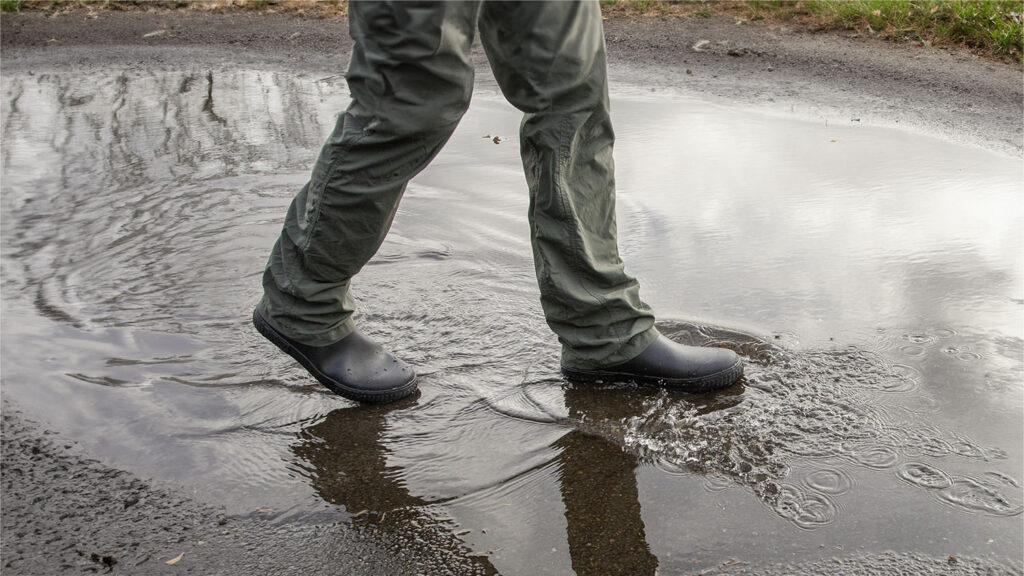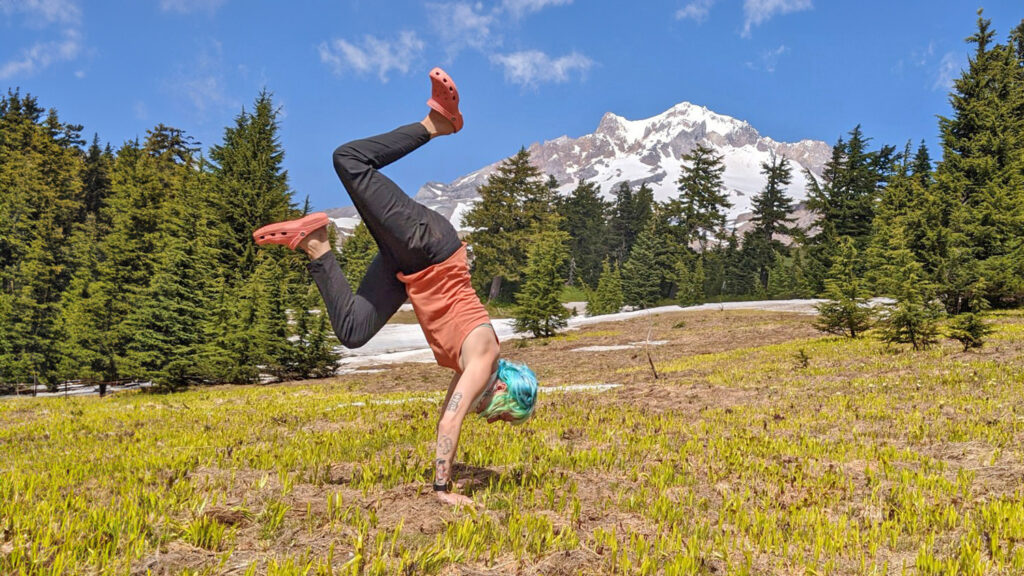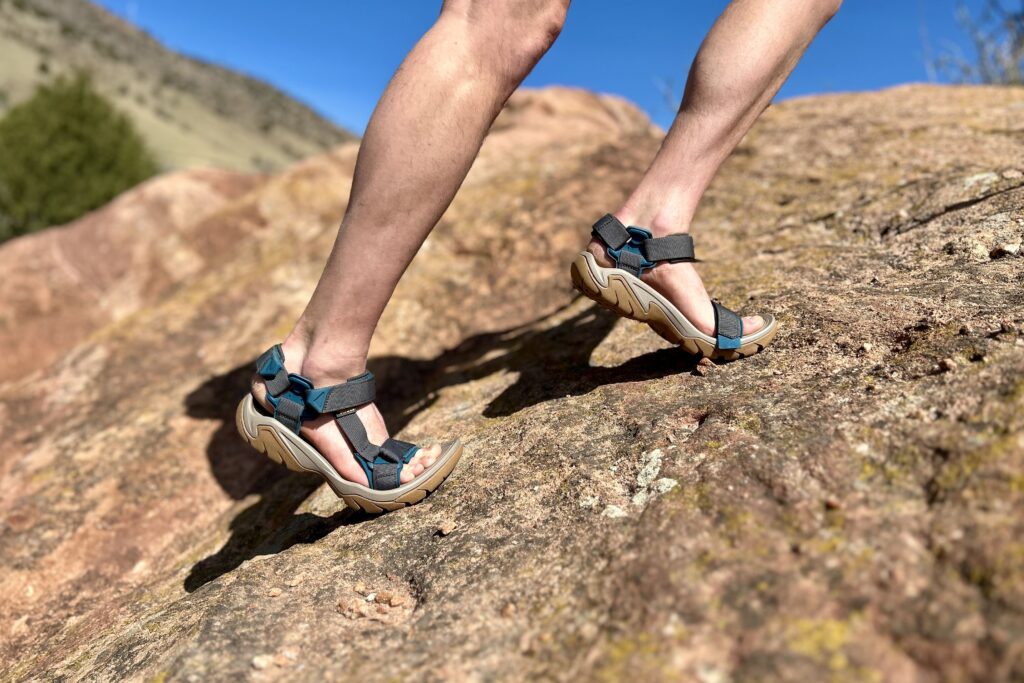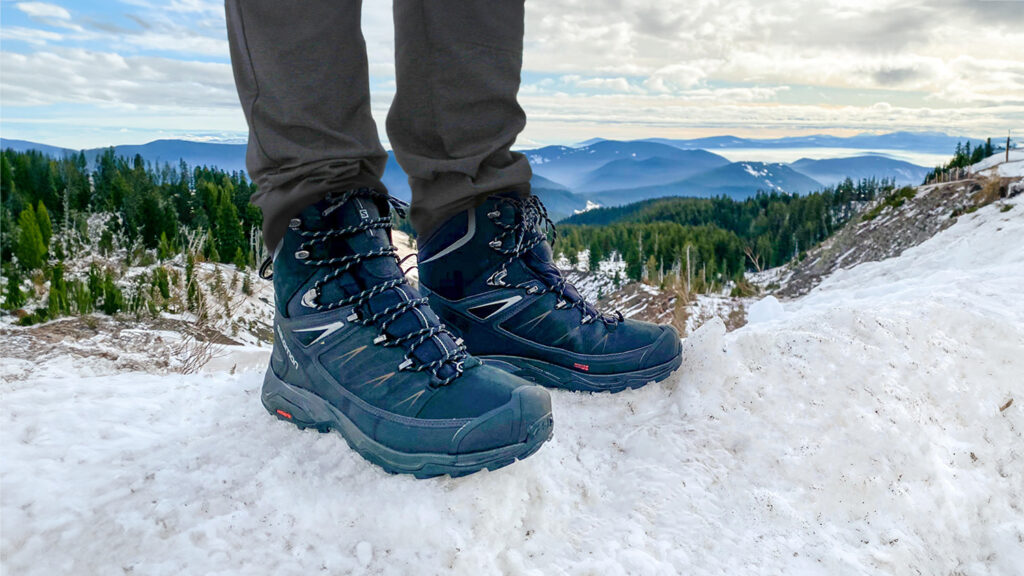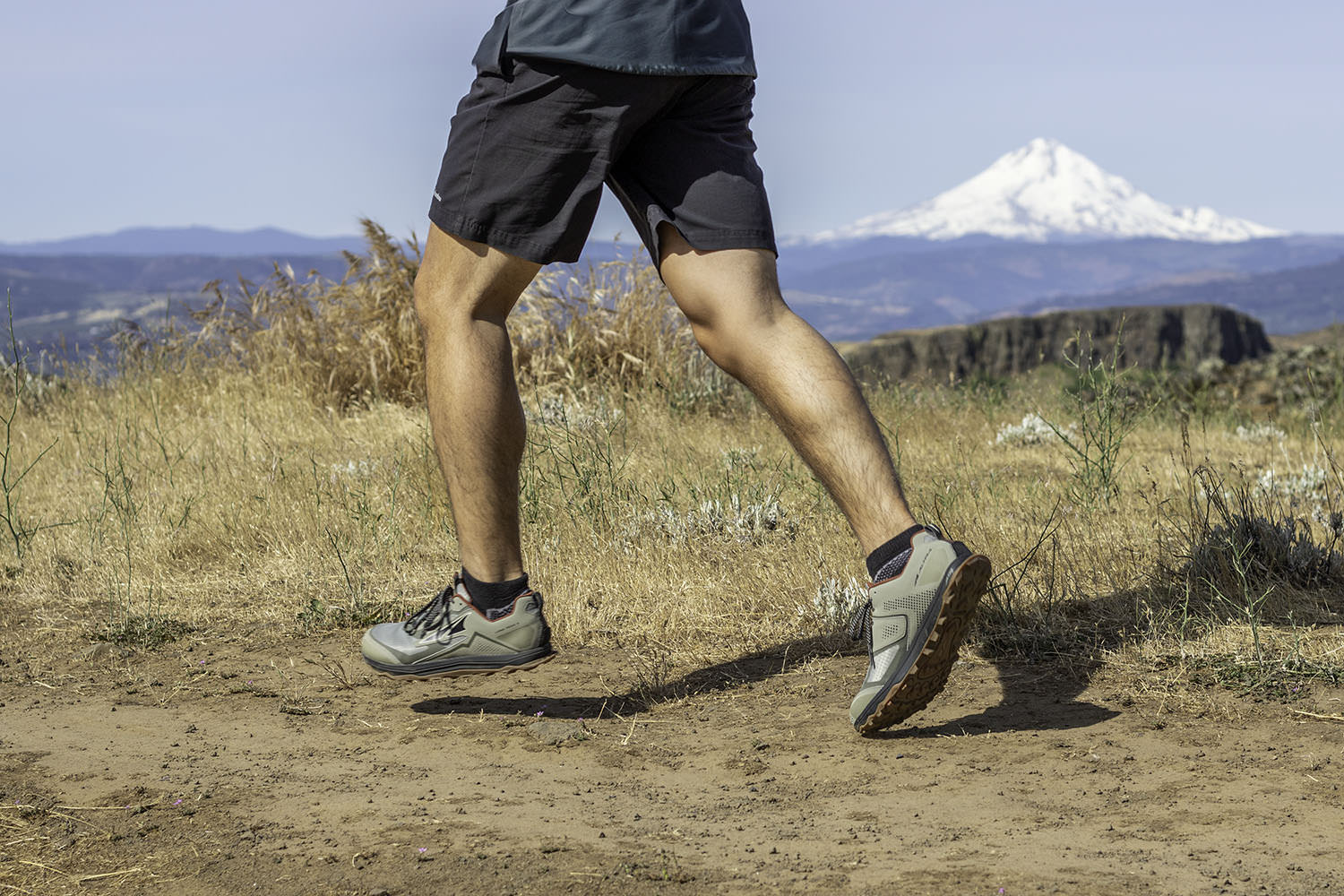
Whether you’ve been a hardcore trail runner for years or you’re transitioning from sidewalks to singletrack, the right pair of running shoes is essential for a fun and healthy running season. From muddy, rocky trails to sandy, steep routes, trail runners are the key to staying comfortable, agile, and stable in any weather.
Our full-time gear testers have been hard at work comparing over 30 running shoes over thousands of miles of trail, taking on the arid Arizona desert, rocky Colorado high country, and soggy rain forests of the Pacific Northwest to narrow down the best of the best. When it comes to metrics like comfort, traction, durability, and more, the shoes on this list leave the rest in the dust.
We’ve also done the legwork for trail running shoes for women. If you want something burlier for your next trail outing, our guide to the best hiking shoes has tons of recommendations. For the dedicated (or aspiring) ultra runner, we’ve got the best running vests, as well as top GPS watches for people who want to track their stats.
And for more info, check out some of our other popular gear guides:
Quick Picks for Men’s Trail Running Shoes
Check out this quick list of our favorites if you’re in a hurry, or continue scrolling to see our full list with in-depth reviews.
Best Trail Runners Overall: Brooks Catamount 4 ($170)
Ultralight Trail Runners for Technical Terrain: Nnormal Kjerag ($195)
Durable Trail Runners for Rugged Trails: La Sportiva Bushido III ($145)
Trail Runners with a Great Balance of Traction, Low Weight & Comfort: Saucony Peregrine 15 ($145)
Affordable Trail Runners That Excel on Muddy Routes: Salomon Speedcross 6 ($145)
Best Budget Trail Runners: HOKA Torrent 4 ($130)
Best Trail Runners with a Natural Foot Shape: Topo Athletic Ultraventure 4 ($150)
Supportive Trail Runners with a Rockered Sole: The North Face Vectiv Enduris 3 ($149)
Best Trail Runners Overall: HOKA Speedgoat 6 ($155)
Reliable Trail Running Shoes with a Classic Design: Brooks Cascadia 19 ($140)
Best Zero-Drop Trail Runners: Altra Lone Peak 8 ($140)
Best Waterproof Shoes for Wet & Cool Weather: Nike React Pegasus Trail 4 GTX ($160)
What’s new
After pounding out countless miles in the latest models, we’ve reshuffled our trail runner rankings with exciting new contenders and a few unexpected shakeups.
- The Brooks Catamount 4 takes our number one spot thanks to its responsive ride and awesome blend of low weight and excellent traction.
- We welcome the Nnormal Kjerag to the top 3. One of the lightest and most technical racing shoes on the market, its airy feel and excellent all-around performance shines.
- The La Sportiva Bushido III earns an Editor’s Pick badge for its sticky updated traction and protective features that thrive on technical and tough terrain.
- We’ve added the HOKA Torrent 4 as one of the best bangs for your buck when it comes to a classic, lightweight trail shoe that ‘s breathable and comfortable.
Men’s Trail Running Shoes Overall Testing scores
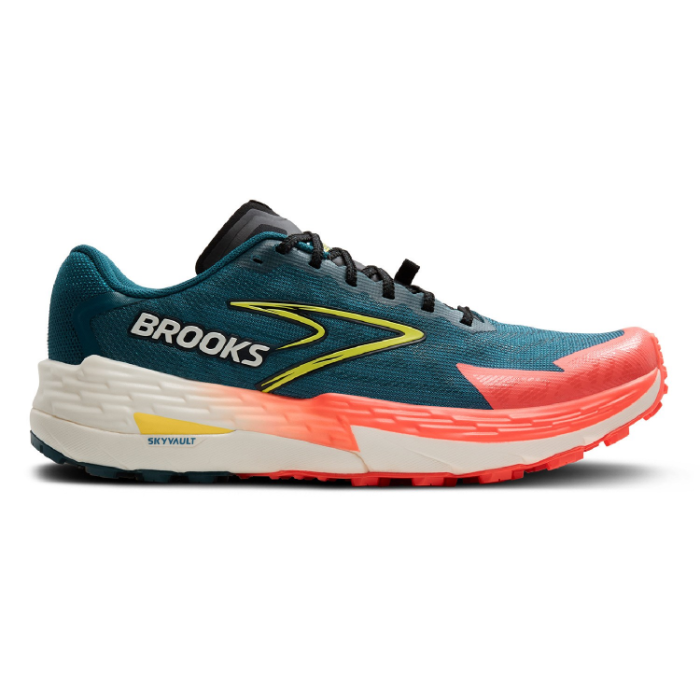
Men’s Brooks Catamount 4
Best Trail Runners Overall
CleverHiker Rating: 4.9/5.0
Price: $170
Weight (Pair): 1 lb. 3 oz.
Heel-to-Toe Drop: 6 mm
Cushioning: Moderate
Best For: Mixed Terrain
Pros
- Lightweight
- Excellent traction for steep ascents / descents
- Durable materials
- Comfortable on long runs
- Good for mixed pavement & trail
- Breathable uppers
- Larger toe box
- Protective toe cap
- Excellent laces
Cons
- Expensive
- Less cushioning than some
- A bit narrow
- Plate makes shoe feel a bit stiff
- No heel loop
- Traction falls short on soft terrain
The nimble, durable, and comfortable Brooks Catamount 4 takes the top spot on our trail runners guide. This version brings some smart updates that immediately made them a team favorite. With a refreshed tread pattern, springy propulsion plate, and impressive durability, these things are super versatile from frontcountry singletrack to backcountry scrambles.
The Catamount is a true trail shoe built for steep ascents and descents. It offers plenty of arch support and has a slightly larger toe box to prevent toe jamming on downhills. Brooks redesigned the lugs with a sharper geometric shape, and traction gets a pattern refresh that grips well. We’ve climbed ten Colorado 14ers and traversed dozens of Utah slot canyons in the 4’s, and felt more confident, speedy, and stable than ever.
Brooks also tweaked the plate design, giving the Catamount 4 a snappier, more responsive feel. Two millimeters of nitrogen-infused foam bumps up the heel slightly while maintaining the shoe’s liveliness. The new tongue design and excellent lacing system further cement these shoes’ comfy, secure ride.
But the Catamount 4 has limitations. It’s a bit stiff on flatter routes and packed ground, where it can feel like overkill. Traction is reliable in most places, although these were a bit underwhelming on sand, mud, and soft surfaces. The narrow fit won’t suit everyone, and there’s still no wide option. Plus, with only a couple of color choices and a steeper price tag than most of the competition, it may miss the mark for some.
However, none of these issues are dealbreakers for us. The Catamount 4 earns the number one position and an Editor’s Pick award because they’re comfy, lightweight, and long-lasting. We’ve run and hiked hundreds of miles in the Catamount 4s from desert to mountains, and we keep reaching for them whether we’re running or hiking.
They don’t come cheap, but the payoff is well worth it. Runners who want a lightweight, breathable, and impressively long-lasting shoe that cruises through long miles of varied terrain will find everything they want in the Catamount 4.
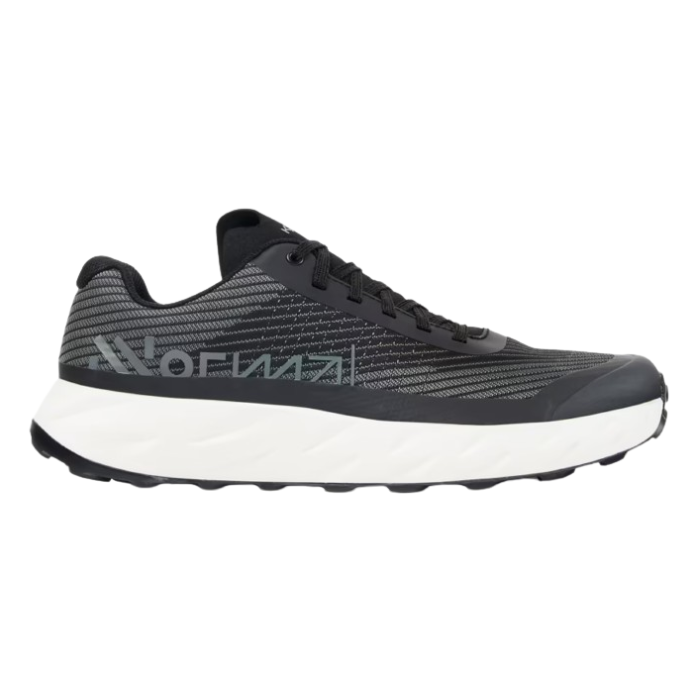
Men’s Nnormal Kjerag 01
Ultralight Trail Runners for Technical Terrain
CleverHiker Rating: 4.8/5.0
Price: $195
Weight (Pair): 14.5 oz
Heel-to-Toe Drop: 6 mm
Cushioning: Minimal
Best For: Technical / Trail
Comfort: 4.3
Pros
- Ultralight
- Responsive
- Very durable
- Good heel cushioning
- Sensitive ground feel
- Versatile for technical routes & packed triails
- Excellent traction
- Top-tier materials
Cons
- Expensive
- Too long (size down 1 full US size)
- Runs narrow
- Lack of insole isn’t for everyone
The Nnormal Kjerag are versatile and technical trail runners pushing the evolution of performance shoes. From dusty desert roads to steep gravelly mountain ascents, these Editor’s Picks land at the top of our list for an exceptionally fast and responsive ride.
The Kjerags are the brainchild of Killian Jornet, one of the fastest and most efficient runners of our lifetimes, so naturally his shoes are ultralight. At only 7.2 ounces per shoe, the Kjerags are some of the lightest footwear in the world. They drop most classic trail runner elements like a heel loop, insoles, and overlays in favor of a minimalist design that feels seriously airy, spry, and nimble.
But, don’t be fooled by their ultralight status – they are built to last. The Kjerags successfully buck the norm of sacrificing durability for low weight. Thanks to a simple, time-tested upper design, outstanding craftsmanship, and a burly outsole, we’ve racked up more than 800 rough-and-tumble miles on ours, and they’re still going strong.
But, no shoe is perfect, and the Kjerags have stiff soles. This design is outstanding for a precision step and outstanding responsiveness. For edging across roots, careful stepping on angled rocks, and bypassing obstructions, the Kjerag delivers nearly unrivaled control. But, that means they feel firm on pavement and packed trails – not what we want in every day trainers. For moderate trails and beyond, though, these shoes are consistently in our rotation.
The other downside? The price tag is steep. However, in this case, that premium price directly translates to gold-star performance. You’ll spend more up front, but our testing finds they’ll last 2 to 4 times longer than many other shoes on our list. Ultimately, you could save more long term since these won’t need to be replaced as often.
For top-tier footwear to crush your next 50K trail race or set a PR on a long-distance effort, the Kjerag is worth considering. It’s combination of responsiveness, durability, and comfort catapults it to the top of our list.
For a lower price tag and a less aggressive shoe overall, check out the Nnormal Tomir 2.0. It’s a great daily trainer with a softer sole that works well for flatter, mellower trails.
More: Nnormal Kjerag Review
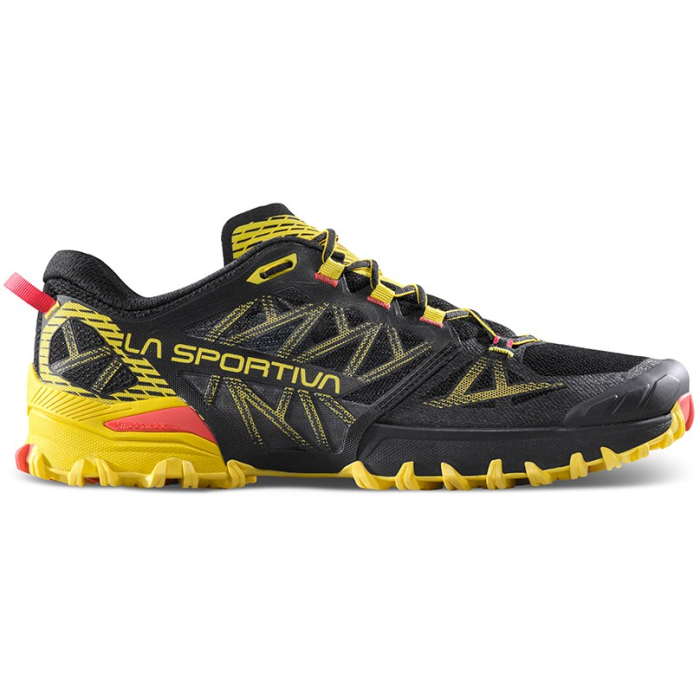
Men’s La Sportiva Bushido III
Durable Trail Runners for Rugged Trails
CleverHiker Rating: 4.7/5.0
Price: $155
Weight (Pair): 1 lb. 5 oz.
Heel-to-Toe Drop: 6 mm
Cushioning: Moderate
Best For: Technical
Pros
- Outstanding traction
- Durable construction
- Protective uppers
- Stable on technical trails
- Excellent arch support
- Large rock plate
- Wide fit option
- Heel loop for easy on / off
Cons
- Stiffer soles not great for mellow terrain
- Flimsy laces
- Upper mesh not as durable as some
- Narrow toe box
- Runs a bit warm
The La Sportiva Bushido III is our all-time favorite trail runner for rugged, mixed-terrain trails. Whether you’re new to running singletrack or you’re a seasoned veteran, these shoes are fast, nimble, and durable when the trails get tough thanks to a protective and burly build, supportive and snug fit, and outstanding traction.
Senior Content Editor Ian Krammer’s climbed 300+ Colorado peaks over 13,000 in the Bushidos, racking up tens of thousands of feet of vert and hundreds of miles in the gnarliest alpine landscapes. Time and again, he finds their sticky traction thrives on dirt, rock, grass, sand, gravel and beyond. The combination of a snug fit and snappy midsole makes these feel very responsive on tough trails. Few other shoes comes close when we need 4-Wheel Drive on (and off) route.
This Editor’s Pick is super durable, too. With reinforced mesh zones on the uppers, ripstop fabric and TPU overlays, pokey underbrush and sharp rocks are no match for the Bushido III. A beefy rubber toe cap protects our piggies against stubbed toes, and the stout heel counter gives us excellent stability from scree fields to gravel gullies.
Keep in mind, though, the Bushido is built for alpine environments and technical trails – not hard-packed city trails and intermittent pavement. The stiff sole, chunky traction, and meticulously engineered upper are best for rugged terrain. In other words, the Bushido III is overbuilt for casual runners, so if you’re sticking to the local trails and lower elevation loops, it may miss the mark.
But if you’re regularly running tough miles in rocky, technical terrain, the Bushido IIIs will kick your performance to the next level. Thanks to stellar durability, aggressive grip, and a sleek design, you’ll feel confident forging your own path from base camp to summit.
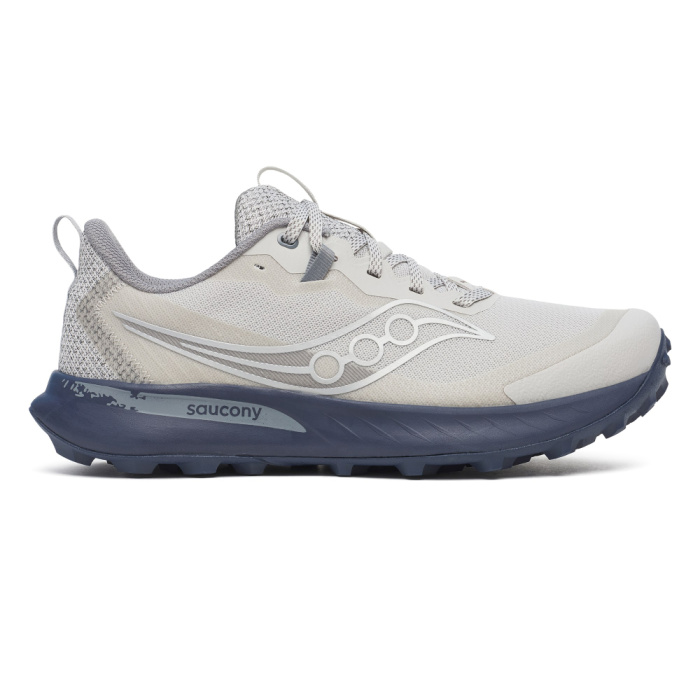
Men’s Saucony Peregrine 15
Trail Runners with a Great Balance of Traction, Low Weight & Comfort
CleverHiker Rating: 4.6/5.0
Price: $145
Weight (Pair): 1 lb. 3.4 oz.
Heel-to-Toe Drop: 4 mm
Cushioning: Moderate
Best For: Mixed Terrain
Pros
- Excellent traction
- Breathable
- Cushier midsole than prior version
- Lightweight
- Secure fit
- Rock plate protects arches
- Comfortable
Cons
- Outsoles wear down quickly
- 20-25 mile break-in period
- Narrower toe box than prior version
- Occassional rubbing at heel
Our team has been running in every iteration of the Saucony Peregrines since they came out, and the 15s are better than ever. The latest iteration features a next-gen foam midsole that’s both more responsive and cushy than the 14. Our testing finds they are seriously comfortable over long miles on any terrain, whether we were chasing a PR on loose dirt in the foothills or cruising in Zone 1 on paved urban routes.
This version is a big step forward when it comes to traction. Saucony updated the pattern by adding more lugs through the midfoot and heel, and we noticed the difference. These offer far better braking on steep downhills than the prior version, and they still perform well on rolling hills and flats.
The details are what set the Peregrines apart. A large heel loop makes them easy to pull on, the cushy tongue is padded and comfortable, and they have a snug, sock-like fit. The rock plate adds good protection underfoot when the path gets bumpy, and a 360° rand adds structure and protection. We also appreciate the tighter lace spacing for an excellent lockdown across the top of the foot.
However, Saucony tweaked the fit in a way that might not work for everyone. The heel counter is more structured, the cuff is slightly taller, and the toe box is a bit narrower. This combination translates to a longer break-in time than prior versions – for us, it took 20 to 25 miles before they softened up, and we had some hot spots and chafing during those first few runs.
Our other knock on the Peregrines is their lack of durability. The outsoles have better traction, but the lugs wear down just as fast as prior versions, with flattening soles beyond 300 miles. We also find the mesh uppers and TPU overlays tend to wear out beyond this point as well.
However, the Peregrines are at the top of the trail runner game when it comes to lightweight, breathable, and comfortable shoes. For those who want an affordable, nimble, and stylish option for big miles and long days, you can’t go wrong with the Peregrines. They’re a great price for a solid shoe.
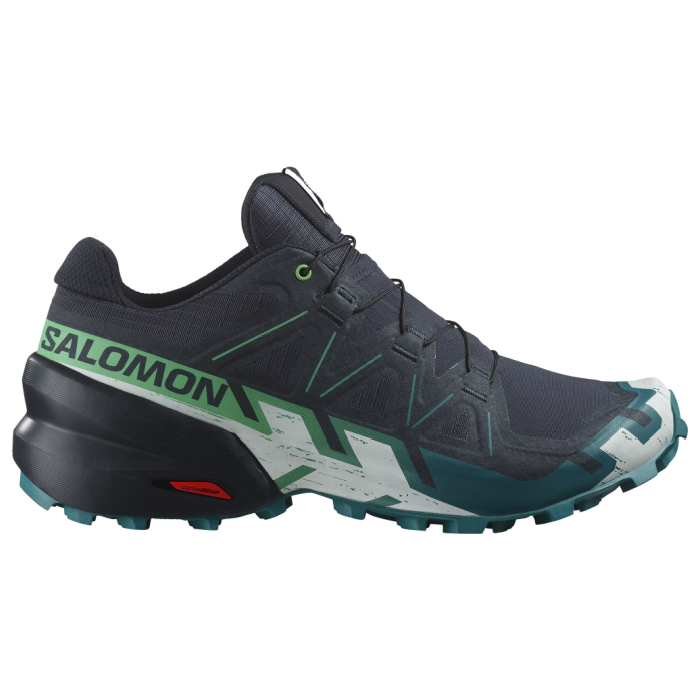
Men’s Salomon Speedcross 6
Supportive Trail Runners That Excel on Muddy Terrain
CleverHiker Rating: 4.5/5.0
Price: $145
Weight (Pair): 1 lb. 5 oz.
Heel-to-Toe Drop: 10 mm
Cushioning: Moderate
Best For: Mixed terrain
Pros
- Excellent traction on soft terrain
- Good arch support
- Comfortable & snug fit
- Sheds debris easily
- Stash pocket for laces
- Cushy ankle cuff
- Good protection
Cons
- Quicklace system takes getting used to
- High heel-to-toe-drop
- Runs narrower
- On the heavy side
- Outsoles not as durable as some
Every iteration of the Salomon Speedcross has made our list, and we’re pleased to welcome the Speedcross 6 as well. Like prior versions, this Salomon model offers excellent arch support, a snug fit, and stellar traction that makes it our fave when running on wet and soft terrain.
If you’re cruising through lots of loose ground – think mud or sand – the Speedcross 6s will be your new best friend. They have a wider-set lug pattern than any other shoe on our list, so it sheds debris effortlessly and immediately while maintaining contact with the ground. It it’s excellent in muck, gravel, snow, and other soft surfaces when we need a reliable step.
We’re also big fans of the Speedcross 6’s glove-like fit and outstanding arch support. Those who prefer running shoes with a snug feel will fall in love with these. That said, if you have wide feet or you’re between sizes, we highly recommend considering the wide version.
They aren’t perfect, though. The Speedcross has a very tall heel-to-toe drop that can feel tippy and unstable on technical terrain, angled routes, and steep downhills. The Quicklace system is fast and efficient, but not it won’t work for everyone – there’s no way to adjust pressure across the foot, so it’s not nearly as customizable compared to regular laces.
We also find that the soles – including traction – wear flat faster than other trail runners on our list. Softer rubber composite wears especially fast on rocky terrain and asphalt. When we ran on mixed terrain – trail, pavement, and packed dirt – we averaged about 300 miles before the lugs were noticeably worn.
That said, there’s no need to tread lightly with the Speedcross 6. If you’re looking for specialty footwear for soft terrain, these are the kicks for you: grippy, comfortable, and stylish.
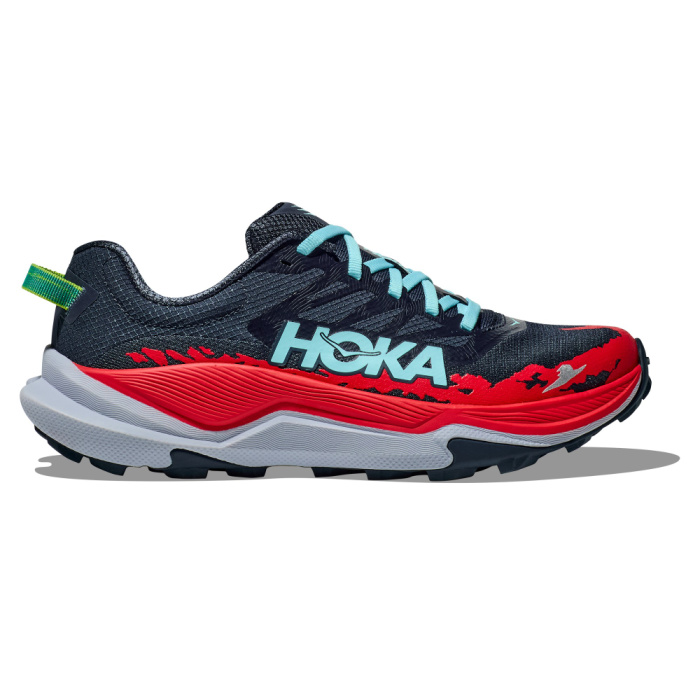
Men’s HOKA Torrent 4
Best Budget Trail Runners
CleverHiker Rating: 4.4/5.0
Price: $130
Weight (Pair): 1 lb. 1.4 oz.
Heel-to-Toe Drop: 5 mm
Cushioning: Moderate
Best For: Trail
Pros
- Less expensive
- Ultralight
- Breathable upper
- Good traction on dry terrain
- Supportive arch
- Responsive & springy
- Sturdy midsole
- Newly added heel loop & extra eyelet
Cons
- Durability is questionable
- Firmer midsole
- Narrow toe box
- Rocker geomtery isn't for everyone
If you’re looking for the best bang for your buck, the HOKA Torrent 4 is a killer value. This model is an outstanding value for entry-level, ultralight trail runners without emptying your wallet. Testing finds it’s an excellent choice for everything from daily runs to moderate-length races.
The Torrents are some of the lightest shoes on this list, and we love the breathable and fast ride. At just over a pound for the pair, they feel nimble and quick-footed for confidence-inspiring stpes. This HOKA model has tons of mesh on the uppers, perfect for dumping heat and sweat on hot summer days, and we love that they dry out in no time after creek crossings and puddle splashback.
The biggest change from the Torrent 3 to the 4 is a slightly cushier midsole foam. Combined with a curved toe spring, this model gets an improved energy return with each step. They’re still more stiff compared to the other HOKA model on this list, the Speedgoat 6, but we like the lively ride. It as plenty of arch support and stability for moderate trails.
The downside of the Torrents? They aren’t as durable as some. Our pairs only got about 250-300 miles before they began to show major wear and tear. Since the all-mesh uppers aren’t reinforced, testing finds the material blows out at the toes and the outsole’s rubber is prone to separating. That said, these are ultralight shoes, and durability often dips in favor of a lower weight.
The Torrent 4s also fit narrow through the midsole and toe box – and they don’t come in a wide version, either. Combined with a slightly more dramatic rocker design than its previous iteration, the Torrent 4s might not work for everyone’s feet, gait, or running style.
But for this price, we still think you should try them out. The Torrents earn our Budget Buy award because they’re a more accessible price for a lower-weight shoe. Anyone looking for a comfy, airy, and less expensive trail runner will find exactly what they’re looking for in the Torrent 4.
If you need a solid option for summer training runs, move regularly in warm and dry climates, or simply want to get out on the trails without breaking the bank , these may be just the colorful kicks you’ve been looking for.
More: HOKA Torrent 4 Review
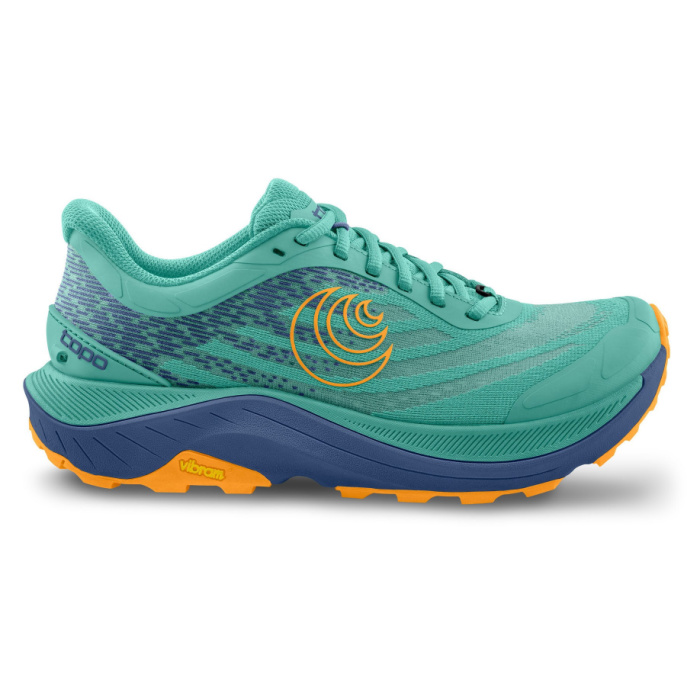
Men’s Topo Athletic Ultraventure 4
Best trail runners with a natural foot shape
CleverHiker Rating: 4.3/5.0
Price: $150
Weight (Pair): 1 lb. 4.8 oz.
Heel-to-Toe Drop: 5 mm
Cushioning: Moderate
Best For: Trail
Pros
- Lightweight
- Roomy toe box
- Comfortable ride
- Breathable uppers
- Fast drying materials
- Flexible
- Versatile for road to trail
- Supportive insole
Cons
- No heel tab for easy on / off
- Not as durable as some
- Lacing adjustments can be tedious
- Softer ankle cuff isn’t for everyone
- Shallow lug depth is best for moderate terrain
We love the Topo Athletic Ultraventure 4 for its wide toe box, super breathable uppers, and plush, flexible soles. This is the first update to the Ultraventures in a long time, although very little has changed. The 4’s get a tighter weave pattern in the uppers, slightly better ankle security with a different TPU layout, and a tighter lockdown at the heel. Our testing finds these are as comfy as ever for long running days and big miles.
What sets the Ultraventures apart is their natural foot shape, featuring a large toe box, narrower heel cup, and midfoot that hugs close. If you’re looking for out-of-the-box comfort, the Ultraventures are good to go right away. We found they didn’t need much break-in time at all and allowed natural foot flexion. The padded tongue and pleasantly soft insoles inspired confidence immediately.
The compromise with the Ultraventures, however, is traction depth. The lugs are not deep enough to bite effectively on wet rocks or trails with lots of steep ascent and descent, especially compared to more technical-focused shoes. The upside? These things are excellent for easy and moderate established trails and routes with mixed flats, pavement, and dirt.
The Ultraventures are also exceptional for hot runs because of their ultra-ventilated mesh uppers, and they dry impressively fast. We find they won’t last as many miles as shoes made with TPU reinforcements or thicker construction, though. We’re averaging around 400 trail miles before fabric starts to break down.
But anyone who wants a big ol’ toe box, plenty of arch support, and a sensitive lacing system should consider keeping a pair of these in the running shoe rotation. Lightweight, breathable, and roomy, the Ultraventure 4’s help us stay ahead of the pack.
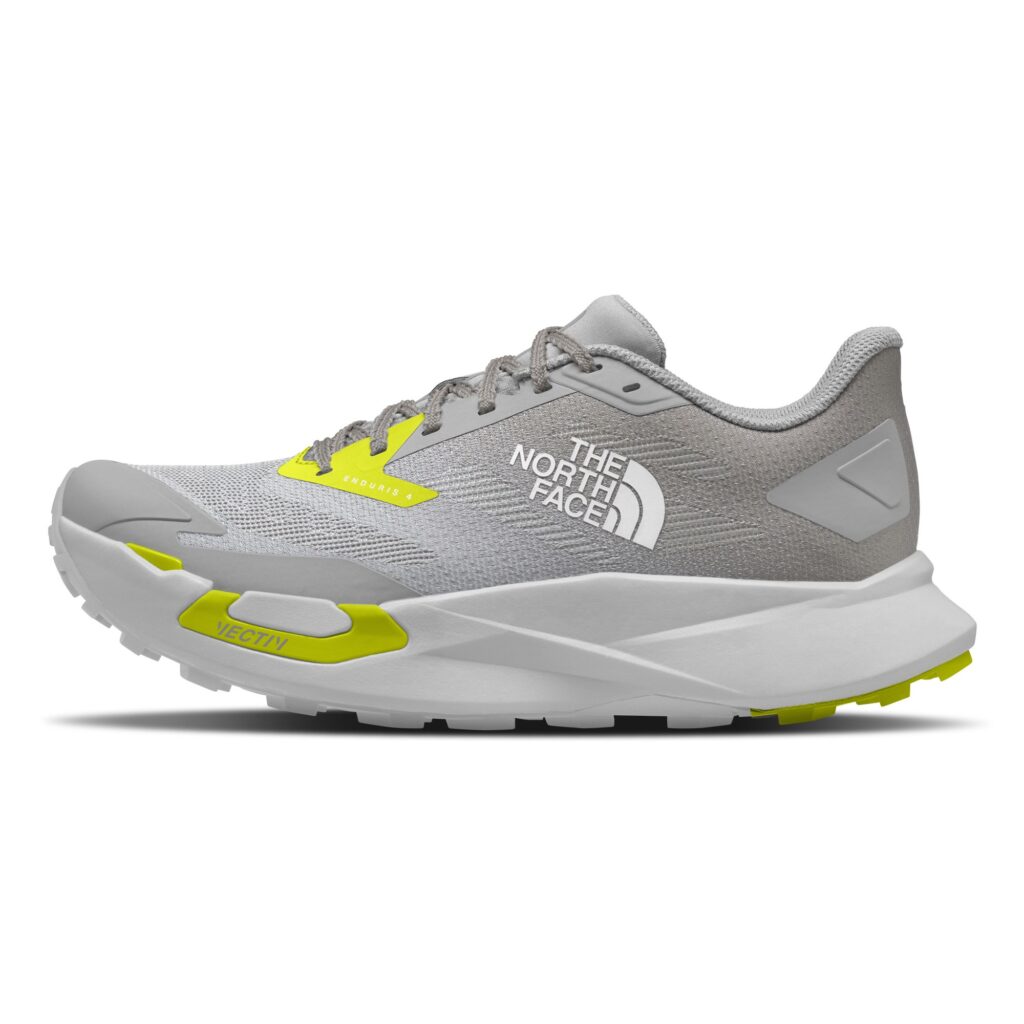
Men’s The North Face Vectiv Enduris 4
Supportive Trail Runners with a Rockered Sole
CleverHiker Rating: 4.3/5.0
Price: $160
Weight (Pair): 1 lb. 4.2 oz.
Heel-to-Toe Drop: 6 mm
Cushioning: Maximum
Best For: Mixed Terrain
Pros
- Durable construction
- Comfortable out of the box
- Cushy foam
- Rockered sole is propulsive
- Good arch support
- Excellent lacing system
- Reliable traction on mixed terrain
- Great lateral stability
Cons
- Outsole is bulky
- Narrow fit
- Less breathable uppers
- Not as responsive as some
- No heel loop
The North Face Vectiv Enduris 4 is a cushy trail runner for trail-to town routes that earns top marks for comfort. The 4’s get some welcome updates including a durable and long-lasting upper, a curved toe and heel for a propulsive step, and tons of foam that devours lumps and bumps on trail.
These babies are comfortable right out of the box and need very little break-in time. In fact, we felt so confident in them, we went straight to the trailhead for a quick out-and-back after picking them up.
The Enduris 4 immediately reminded us of the HOKA Speedgoat versions 4 and 5 because of their super thick foam midsoles that give a soft, forgiving ride that keeps momentum. The foam isn’t sloppy, though – with a curved toe spring and slightly bouncy heel, we find overall that energy return is awesome.
Our testers also loved the slightly rockered sole with a TPU plate. This design walks a fine line between stability and cushioning, making the Enduris 4 perfect for long-distance efforts on moderate trails.
On the flip side, the foam removes ground feel. That means they aren’t the most responsive or precise shoe, and the outsole is aesthetically and functionally a bit bulky compared to others. As a result, we find the Enduris 4 can feel a bit clunky on technical terrain and steep uphills, which is why it’s a bit lower our list.
We also find the double-layer uppers run hot. Our feet were sweating above 80°, although this thick design is super durable. With 400 miles and counting on our pair, they show very little wear and tear.
But when it comes to cushioning, the Enduris 4 is king. These are comfy and long lasting trail runners that perform from trail to pavement. The rock-eating ride of this North Face model keeps us crusiing on medium-tempo efforts mile after mile. It’s become one of our faves for daily runs – or hitting a PR in the 10K – and we think you’ll love it as well.
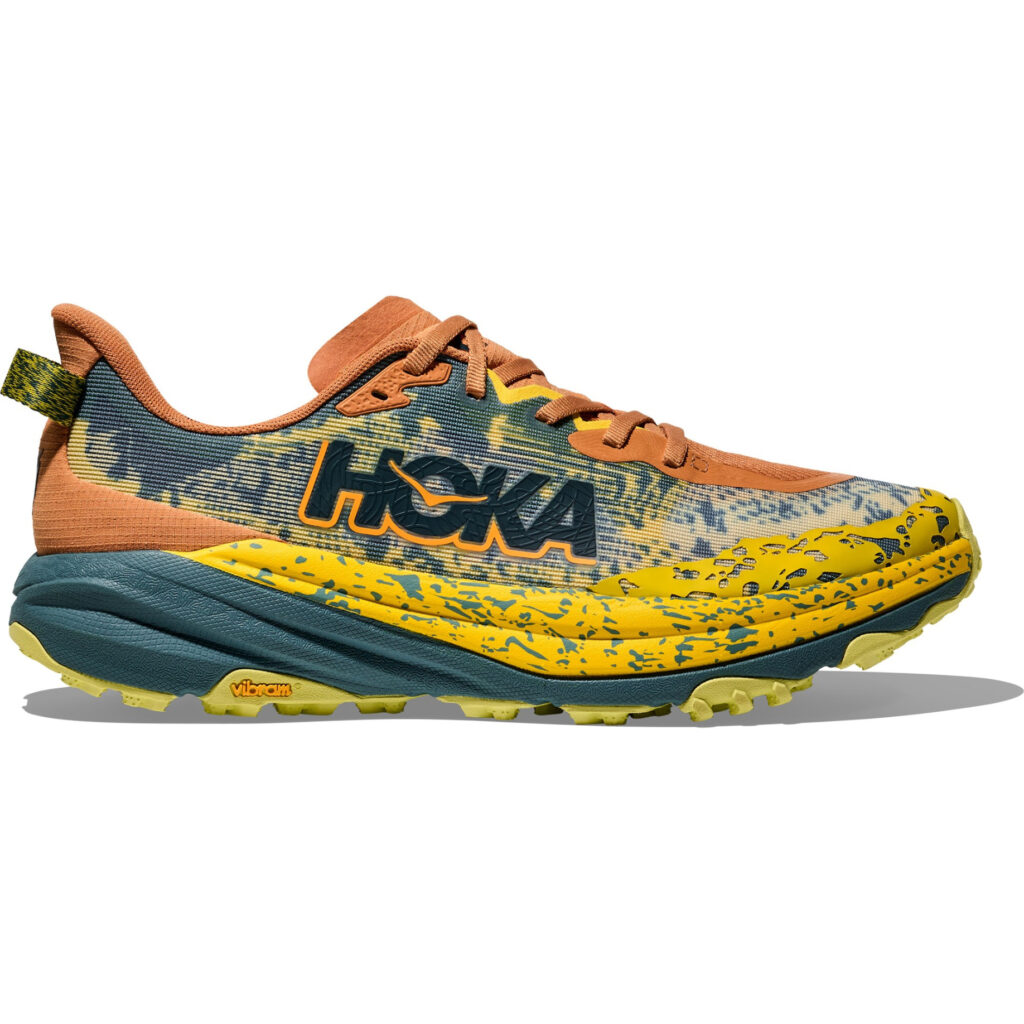
Men’s HOKA Speedgoat 6
Comfy and Breathable Shoes with a Firmer Sole
CleverHiker Rating: 4.1/5.0
Price: $155
Weight (Pair): 1 lb. 3.6 oz.
Heel-to-Toe Drop: 5 mm
Cushioning: Moderate
Best For: Trail
Pros
- Comfortable ride
- Excellent traction
- Supportive midsole
- Good lacing system
- Versatile for pavement or trail
- Lots of colorways
- Snug fit
Cons
- Stiffer than prior versions
- Smaller heel flare than prior versions
- Durability issues past 300 miles
- Bright colorways aren’t for everyone
The HOKA Speedgoat 6 still delivers the signature blend of support, grip, and agility that made this line famous, but with some updates that may not work for every runner. That said, we’ve logged hundreds of miles from city trails to alpine summits and version 6 still holds its own.
This iteration trims the foam stack for a firmer, more responsive feel underfoot. That’s a big change from the gravel-gobbling, ultra-cushy ride of prior versions. The shoe is smooth on rugged section and technical trails, but long-distance runners will notice less shock absorption compared to previous versions.
The upper’s new mesh is also an improvement for both breathability and drying speed, making it a strong warm-weather performer. We dunked these multiple times during creek crossings on a section hike of the Colorado Trail, and they were dry within the hour. The redesigned outsole delivers excellent traction. It’s noticeably grippier than the last version, which is great news for technical terrain.
On the downside, we found that the firmer sole can lead to foot fatigue over long distances. Additionally, HOKA made the fit just a bit narrower through the midsole and toe box, and the new design felt restrictive to some of our testers. For folks who are in between sized, check out the wide version.
The Speedgoat 6’s heel flare was also dramatically trimmed. That means they aren’t as soft on heel strike, nor as reliable on downhills, as the 13 and 14 were. Finally, durability continues to be an issue with this version – our shoes were looking rough at the 300-mile-mark.
Although the Speedgoats are no longer in our top 3 trail running shoes, they remain a solid choice for hikers and runners. If you’re seeking lightweight performance, excellent grip, fast-drying comfort, and bright colorways, HOKA still has a winner – provided you’re okay with ditching that old cozy bounce for a stiffer, snoozier vibe.
More: HOKA Speedgoat 6 Review
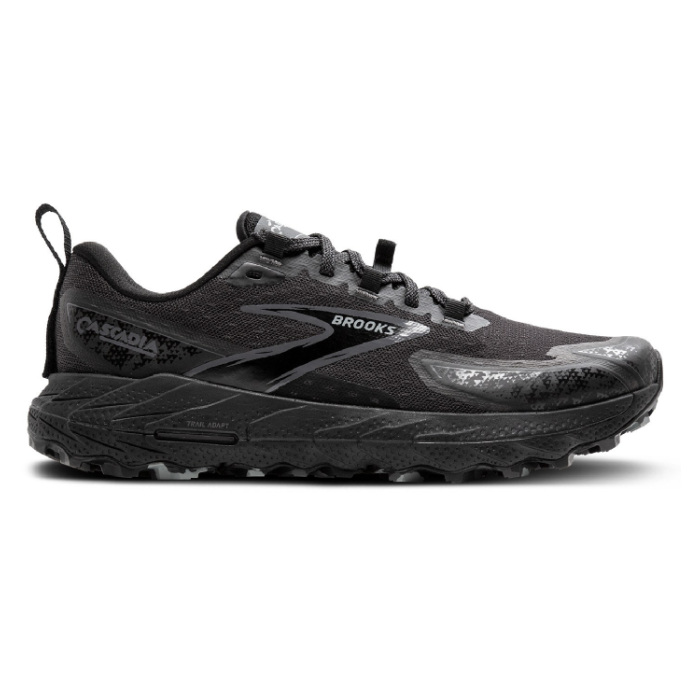
Men’s Brooks Cascadia 19
Reliable Trail Running Shoes with a Classic Design
CleverHiker Rating: 4.0/5.0
Price: $140
Weight (Pair): 1 lb. 7.3 oz.
Heel-to-Toe Drop: 8 mm
Cushioning: Moderate
Best For: Mixed terrain
Pros
- Cushioned heel and midsole
- Less expensive
- Versatile for road and trail running
- Large heel tab for easy on / off
- Flexible uppers
- Reliable traction on most terrain
- Built-in gaiter attachment
- Protective rock plate
Cons
- Not as durable as some
- Less ground feel than some
- Laces can get stiff over time
- Mesh uppers blow out
- Heel cuff can be uncomfortable
If you’re looking for a running shoe with all-around performance, excellent comfort, and versatility for long miles on trail or road, the Brooks Cascadia 19 fits the bill – and most budgets.
Our team has been running and hiking in this model for years, logging thousands of miles on trails like the PCT, CDT, and Pinhoti. CleverHiker’s Managing Editor, Ben Applebaum-Bauch, has put 6,000+ miles on multiple versions, and the 19s remain a daily go-to for everything from trail runs to backpacking trips.
Thanks to plush foam midsoles, a supportive midfoot arch, and breathable mesh uppers, the Cascadia 19 delivers excellent comfort right out of the box with virtually no break-in time. The flexible uppers and effective lacing keep feet secure, while the springy midsoles provide plenty of cushion for pounding out long distances on packed dirt, sandy stretches, and even asphalt.
They don’t necessarily rule any one metric, but that’s their charm. The Cascadia 19’s stable ride, dependable traction, and lightweight feel make them ideal for most foot shapes and a wide range of trail conditions.
Our biggest gripe is durability. The lighter build sacrifices some toughness – we’ve come to expect mesh blowouts at the edge of the toes and worn tread after a single season of heavy use. Also, if groundfeel is important to you, the foam midsoles don’t offer much sensitivity on more technical terrain, and it’s worth noting these shoes are still on the heavier side for this category.
But, the Cascadia 19 remains a stellar value. With its reliable performance, cushy ride, breathable design, and quick-drying materials, it’s an outstanding deal for anyone stacking up miles. If you’re taking on established trails and don’t want to spend an arm and a leg for quality trail runners, consider the Cascadia 19.

Men’s Altra Lone Peak 9
Best Zero-Drop Trail Runners
CleverHiker Rating: 3.8/5.0
Price: $140
Weight (Pair): 1 lb. 6.4 oz.
Heel-to-Toe Drop: 0 mm
Cushioning: Moderate
Best For: Trail
Pros
- Less expensive
- Roomy toe box
- Excellent traction
- Breathable uppers
- Fast drying
- Sensitive lacing system
- Built-in gaiter attachment
- Cushier midsole
Cons
- Not as durable
- Zero drop doesn’t work for everyone
- Heavier than competition
- Heel and cuff stiffer than prior versions
If you’re looking for the ultimate zero-drop trail shoe, the Altra Lone Peak 9 is our top choice. Every iteration of the Lone Peaks have been on our best trail runners list (and best hiking shoes guide) for years thanks to their airy feel, grippy outsole, and ergonomic foot shape.
The 9’s are an excellent version of the Lone Peaks, giving both long-time fans and newbies a lot to love. They have a cushy sole that offers a good balance between ground feel and protection. A natural foot shape with a huge toe box has plenty of room for our piggies to wiggle. The midfoot is narrow but soft, and an extra set of lace holes at the ankle offer a highly customizable lacing pattern for this version.
The 9’s mix up the traction, and we love the change. While still preserving their MaxTrac pattern, the lugs are in slightly different position that offers more reliable grip on steep uphills and downhills. Mesh on the tongue helps them dry fast, venting exceptionally well on hot and dry hikes. Altra also adds a gaiter attachment loop at the front of the shoe to lock down gaiters tightly to the shoes and help keep debris out.
The main knock on the Lone Peak 9’s is a long-time issue: durability. It’s the reason they rank lower – our pairs were looking rough at only 200 miles, with fabric blowing out at the toes and the TPU overlays lifting off. The updated heel cuff isn’t as cushioned or comfortable as the prior version, which means there’s a longer break in period. And, Lone Peaks remain one of the heavier pairs we reviewed compared to other trail runners.
Additionally, zero-drop shoes aren’t for everyone. Keep in mind that going from higher heel-to-toe-drop footwear to a zero-drop shoe often requires a bit of a transition period to avoid injury, so make sure to account for this if you haven’t used zero-drop shoes before.
That said, the Lone Peaks are a winner when it comes to ground feel, an ergonomic step, reliable traction and breathable uppers. We recommend them to anyone who wants a comfortable, roomy, and affordable toe-friendly running shoe.
More: Altra Lone Peak 9 Review
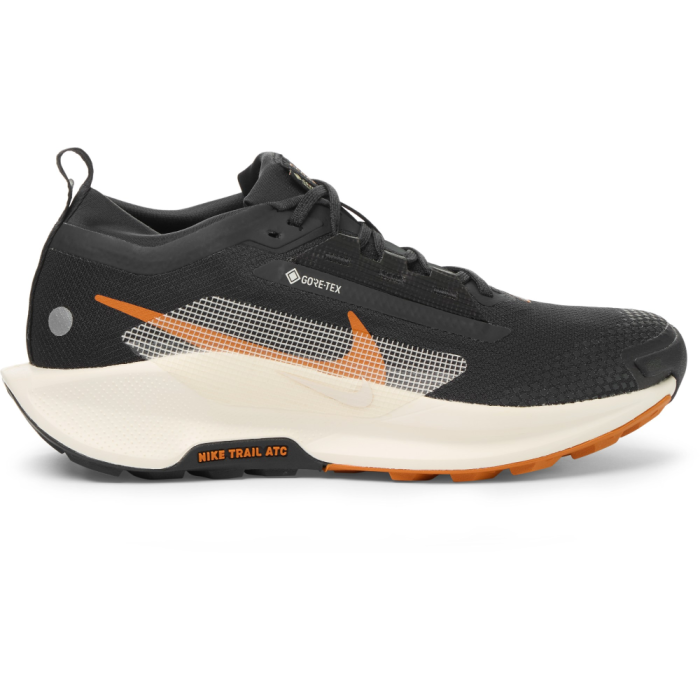
Men’s Nike Pegasus Trail 5 GTX
Best Waterproof Trail Runners for Wet & Cool Weather
CleverHiker Rating: 3.6/5.0
Price: $180
Weight (Pair): 1 lb. 4.3 oz.
Heel-to-Toe Drop: 9.5 mm
Cushioning: Moderate
Best For: Mixed terrain
Pros
- Good traction on mixed terrain
- Cushy, improved midsole
- Waterproof
- Comfortable
- Gaiter-like ankle cuff keeps out debris
- Heel and tonge tab for easy on / off
- Rocker shape
- Good lacing system
Cons
- Runs narrow and short – go up half a size
- Less durable than some
- Tall heel-to-toe drop isn't for everyone
- Runs hot (common for GTX shoes)
- A bit soft on steep uphills / downhills
If you’re a year-round runner undeterred by wet, muddy, and snowy conditions, the Nike Pegasus Trail 5 GTX are the shoes for you. These are waterproof powerhouses that offer good traction, a comfy ride, and a reasonable weight to keep you moving on slippery asphalt and wet, muddy routes.
The Pegasus Trail 5s are impressively comfy mile after mile thanks to updated, cushy midsoles that balance springiness and support. The foam feels more responsive than the prior version, which led to less foot fatigue. And we love the gaiter-like cuff, which rises higher than any other shoes on our list to block out debris.
This Nike model gets an update with a more rockered profile. Pair that with a higher stack height and a tall heel-to-toe drop, these shoes thrive on moderate terrain. We felt especially fast on moderate trails with gentle uphills and downhills, and blocky, square lugs offered good traction on most surfaces, including wet and slick wood and slick rocks.
In general, we avoid Gore-Tex trail runners in warm weather because don’t offer much ventilation. The Pegasus Trail 5s are no exception. We’d save these for cooler weather when the added warmth and protective waterproofing is welcome.
Nike made this iteration more narrow than the prior version, and it’s not offered in wide. The tall heel to toe drop and stack height also take a bit of getting used to. And, while great on the trail, their long-term durability is questionable.
These are the only Gore-Tex shoes to make our list for a reason, though. For folks with a year-round training schedule, the Pegasus Trail 5s are up for crushing miles . They’re a bit spendy, but we think they’re worth every penny for those who need durable, fast, waterproof shoes, no matter the season.
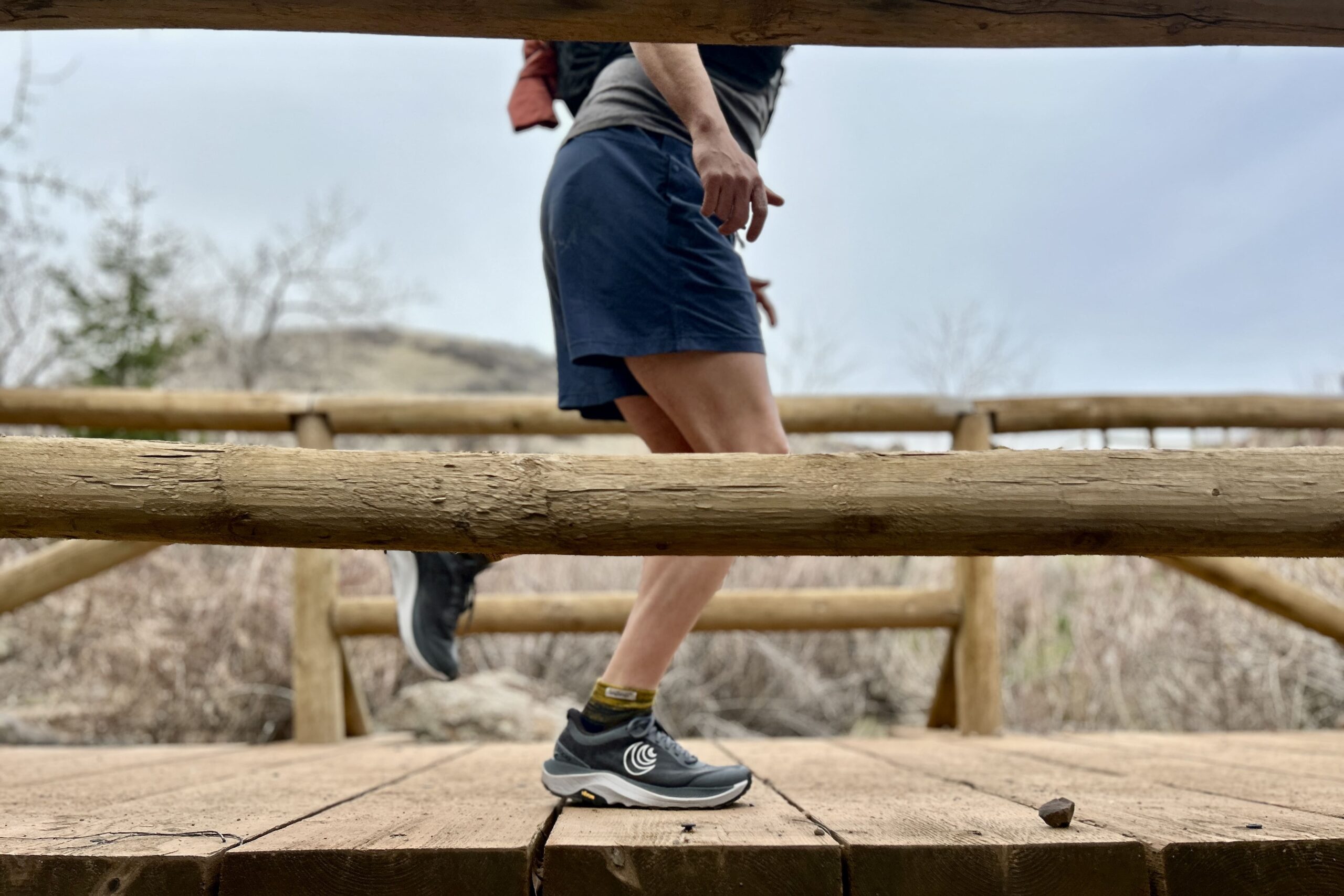
Product Comparison Table
| oSort | Product | Price | Weight (Pair) | Heel-to-Toe Drop | Cushioning | Best For | Comfort | Traction | Weight Score | Durability | Breathability | Responsiveness | 0 |
Brooks Catamount 4 View at REI View at Amazon |
$170 | 1 lb. 3 oz. | 6 mm | Moderate | Mixed Terrain | 4.6 | 4.6 | 4.8 | 4.8 | 4.8 | 4.3 | 1 |
Nnormal Kjerag 01 View at REI View at Nnormal |
$195 | 14.5 oz | 6 mm | Minimal | Technical / Trail | 4.3 | 4.5 | 5.0 | 4.5 | 4.4 | 4.9 | 2 |
La Sportiva Bushido III View at REI View at Amazon |
$155 | 1 lb. 5 oz. | 6 mm | Moderate | Technical | 4.2 | 4.7 | 3.5 | 4.8 | 3.8 | 4.9 | 3 |
Saucony Peregrine 15 View at REI View at Amazon |
$145 | 1 lb. 3.4 oz. | 4 mm | Moderate | Mixed Terrain | 4.4 | 4.4 | 4.7 | 4.4 | 4.6 | 4.7 | 4 |
Salomon Speedcross 6 View at REI View at Amazon |
$145 | 1 lb. 5 oz. | 10 mm | Moderate | Mixed terrain | 4.6 | 4.8 | 3.8 | 3.9 | 4.3 | 4.4 | 5 |
HOKA Torrent 4 View at REI View at Amazon |
$130 | 1 lb. 1.4 oz. | 5 mm | Moderate | Trail | 4.5 | 4.2 | 4.6 | 3.3 | 4.7 | 4.6 | 6 |
Topo Athletic Ultraventure 4 View at REI View at Amazon |
$150 | 1 lb. 4.8 oz. | 5 mm | Moderate | Trail | 4.7 | 4.3 | 4.0 | 4.1 | 4.4 | 4.3 | 7 |
The North Face Vectiv Enduris 4 View at REI View at Amazon |
$160 | 1 lb. 4.2 oz. | 6 mm | Maximum | Mixed Terrain | 4.9 | 4.3 | 4.4 | 4.7 | 3.6 | 4.4 | 8 |
HOKA Speedgoat 6 View at REI View at HOKA |
$155 | 1 lb. 3.6 oz. | 5 mm | Moderate | Trail | 4.7 | 4.5 | 4.5 | 3.6 | 4.5 | 3.8 | 9 |
Brooks Cascadia 19 View at REI View at Amazon |
$140 | 1 lb. 7.3 oz. | 8 mm | Moderate | Mixed terrain | 4.1 | 4.1 | 3.0 | 3.8 | 4.0 | 4.3 | 10 |
Altra Lone Peak 9 View at REI View at Backcountry |
$140 | 1 lb. 6.4 oz. | 0 mm | Moderate | Trail | 4.0 | 4.4 | 3.2 | 3.0 | 4.2 | 4.8 | 11 |
Nike Pegasus Trail 5 GTX View at REI View at Amazon |
$180 | 1 lb. 4.3 oz. | 9.5 mm | Moderate | Mixed terrain | 4.2 | 3.8 | 4.2 | 3.3 | 3.0 | 3.9 |
|---|
How We Test & Methodology
Our testing protocol involved a minimum of 10 trail runs per shoe – in many cases, dozens of runs – across a variety of real-world conditions. We scrutinized each pair based on their comfort, traction, weight, durability, breathability, and responsiveness. Testing took place everywhere from gravel roads to scorching hot pavement, and wet mountain trails to gnarly technical desert slopes. We tested the limits of shoes in rain, snow, and hot weather to find the best of the best. Here’s a closer look at how we determine the performance of the footwear on our guide.
TRACTION
Traction comes down to two things: the rubber on the outsole and the lug pattern. We analyzed how well the soles gripped slick rocks and slippery wood bridges, and how effectively the lugs bit into dirt and mud on steep climbs as well as loose gravel on sharp descents. We also checked if those same lugs got in the way on smooth paths, highlighting which shoes handled every type of terrain from parking lot pavement to alpine scrambles.
WEIGHT
We put each pair of shoes on the scale, but numbers only tell part of the story. Out on the trail, we noted which pairs kept our legs fresh all day and which gradually turned into ankle weights as the miles stacked up. In general, we find heavier shoes have better durability in technical environments, and lighter shoes perform best on moderate trails and established routes.
COMFORT
Comfort is more than just how soft a shoe feels – it’s about how your foot fits inside. We looked for shoes with nuanced sizing, including wide versions. We documented areas that felt too snug or too roomy. We tested multiple models of the same shoe to see how they handled different foot shapes, running styles, and terrain. After miles of running on a mix of trails and in all kinds of weather, we noted any rubbing, blistering, and uncomfortable movement.
DURABILITY
Durability takes the entire shoe’s longevity into account. We considered how uppers withstand stress and abrasions, the way midsoles wear down with mileage, and the outsole’s ability to resist separation. We analyzed reinforced overlays, welding quality, and overall construction to detect vulnerable spots. We watched for damage on essential components like the cuffs, tongue, and laces. We also inspected exposed foam areas on the soles to assess their resistance to punctures, tears, and excessive damage in rugged trail conditions. We meticulously noted the mileage to understand how long it takes until the lugs wear flat and the shoes begin to blow out.
BREATHABILITY
Nobody wants hot, soggy feet in summer weather. We put these shoes through the wringer on 90° runs to see how effectively they kept our feet cool and dry. But, breathability also accounts for the shoes ability to drain water and dry. We tested drying times in the field by running through creeks, puddles, and in rain and tracking their dry time. We also tracked thier drying time indoors, controlling factors like airflow and temperature to determinethe best of the best.
RESPONSIVENESS
We measured responsiveness by how well each shoe propelled us forward and handled sharp turns on rough terrain. Feeling the trail beneath our feet mattered – too much harsh feedback meant tired feet by day’s end, although too much foam reduced precision although kept us going further and for longer. Features like a rock plate, material choice, and longevity all factor into the responsiveness score of each shoe.
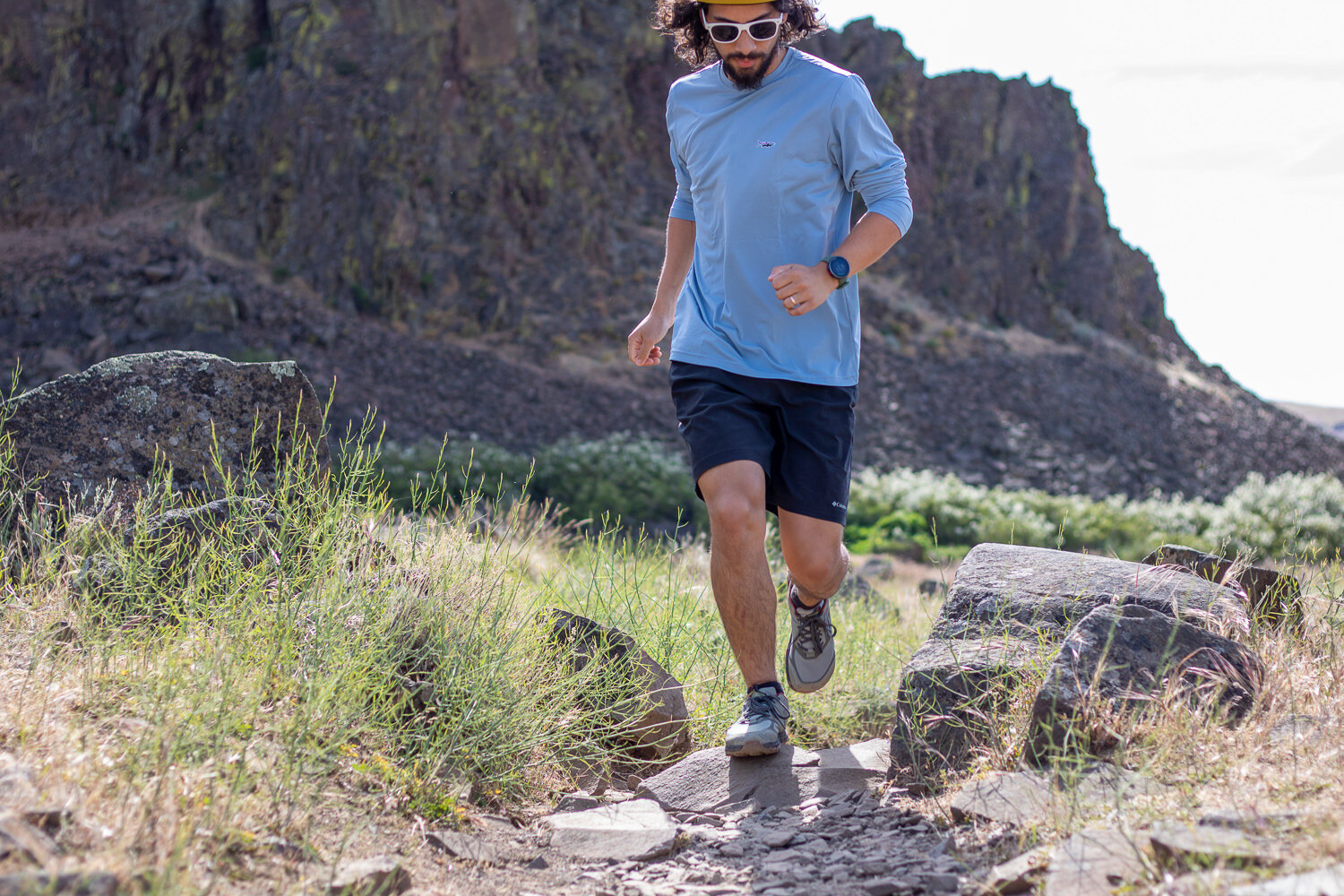
WHY TRUST CLEVERHIKER?
Senior Content Editor Ian Krammer has been hiking and climbing Colorado’s tallest peaks for nearly a decade. With hundreds of thousands of feet of vert, over 10,000 miles of trail, and 600+ peaks over 13,000′ under his belt, Ian’s learned what makes a great shoe for running, hiking, and backpacking on some of the toughest alpine terrain out there. His extensive experience exploring remote backcountry routes in all weather conditions makes him uniquely qualified to put men’s running shoes through their paces and determine what makes each pair worthy of a spot on our gear guide.
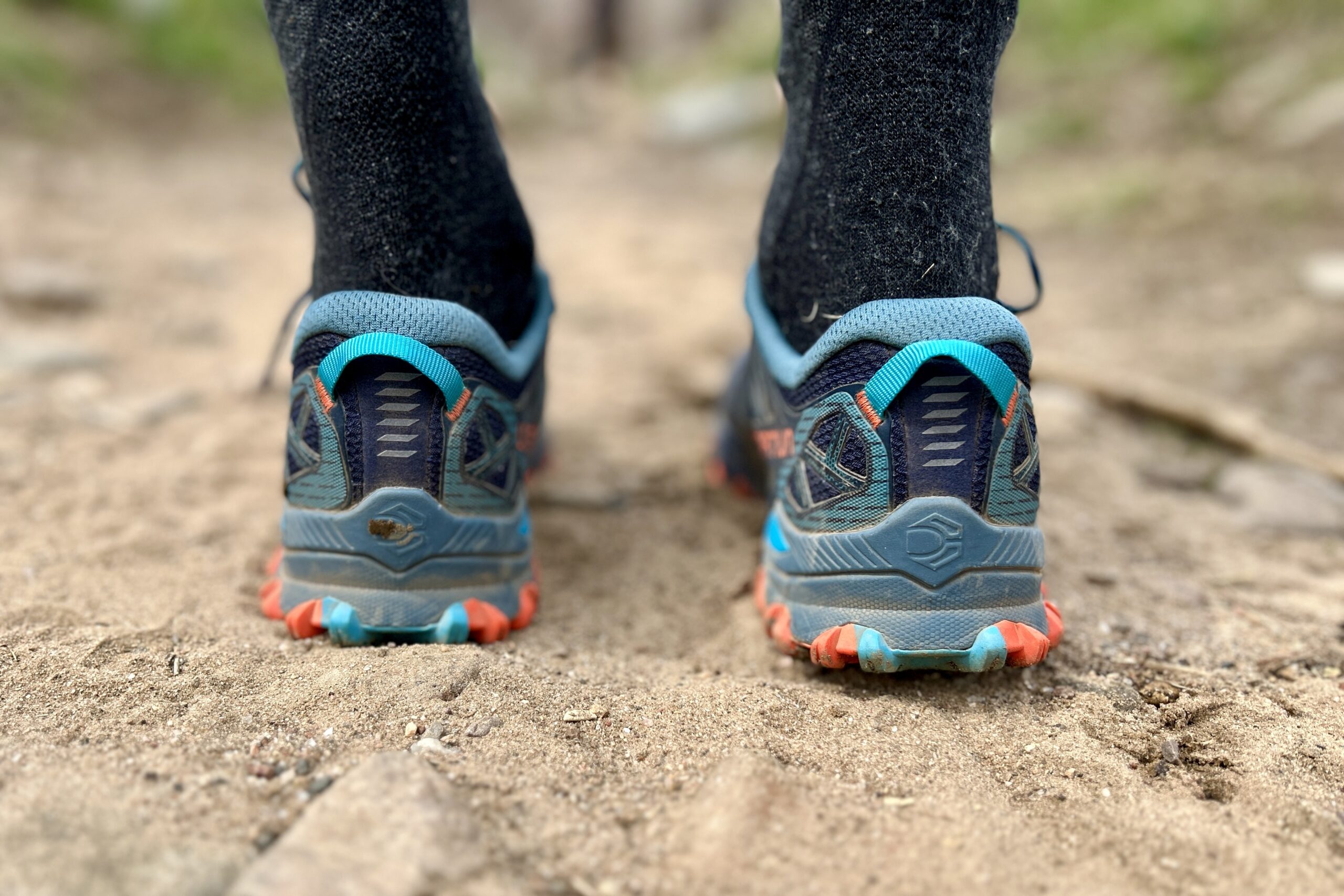
Analysis & Results
Not all trail shoes are created equal, so we broke things down by what matters most – traction, comfort, weight, durability, breathability, and responsiveness. We tested and compared them all to show you which models truly rise to the top.
VALUE
Buying trail runners isn’t cheap, and most runners go through multiple pairs a year. That means value comes down to more than just price – it’s also about the level of versatility the shoes offer. During testing, we found several budget-friendly shoes that punched above their price in both durability and range, whereas some of the highest-priced models didn’t hold up across varied terrain. Out of all the gear you consider for running or hiking, we recommend choosing the highest quality footwear your budget will allow based first on comfort and durability, and then price.
The best bang for your buck are the Brooks Cascadia 18 and the Saucony Peregrine 15. They are a similar price point and both offer a stellar blend of durability, comfort, and traction. These shoes are a great place to start if you’ve got an eye on your budget but want excellent all-around running shoes with a classic design and versatility from city to trail to backcountry.
We also highly recommend the HOKA Torrent 4 and the Altra Lone Peak 9. The Torrents are a comfortable shoe that’s excellent for everything training to long runs, and the Lone Peak 9s are a good choice for zero-drop enthusiasts that want a blend of comfort and traction. The downside of these? They aren’t as durable as pricier models.
Finally, we think the Nnormal Kjerag is a great value. Yes, it is by far the priciest shoe we tested, but you get exactly what you pay for: a performance running shoe that’s built to last. At over 800 miles of testing, these shoes are only just starting to wear down, making them a smart investment and an outstanding value compared to less expensive shoes that would have blown out 400 miles earlier.
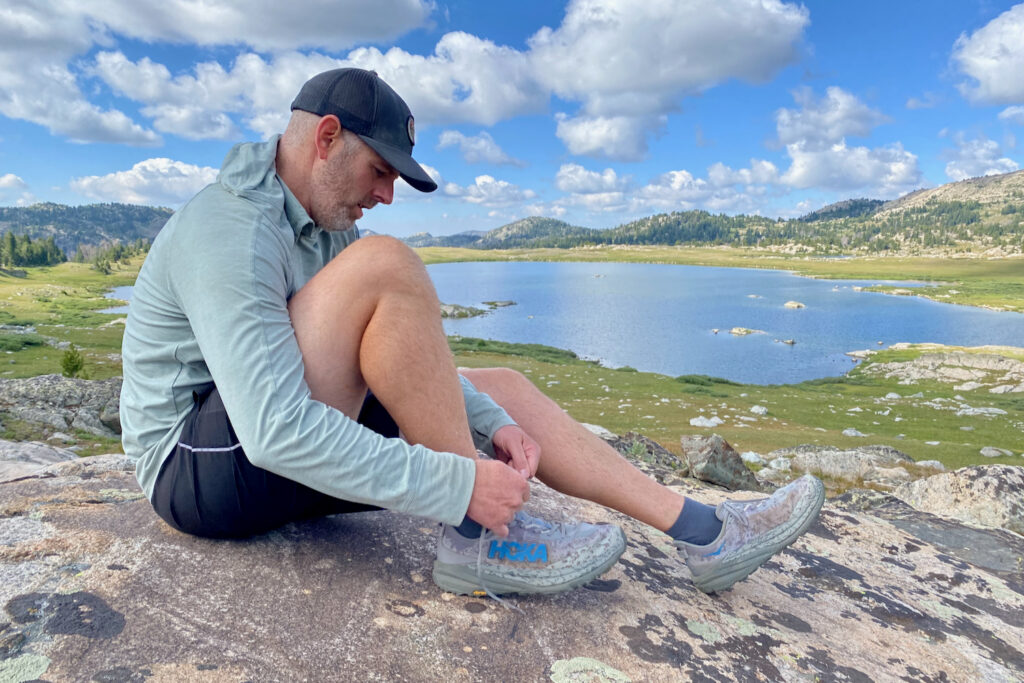
COMFORT & FIT
Shoe comfort is extremely individual. Everyone has slightly different foot shapes and sizes. But certain priorities remain – we recommend shoes with a flexible but supportive sole, enough room for your toes to wiggle, plenty of breathability, and lots of cushioning for those long miles. Top performers combine smart design and quality materials to accommodate a wide spectrum of foot shapes without causing pain.
When it comes to comfort, The North Face Vectiv Enduris 4 is our top pick. It’s a cushy, foam-forward running shoe that offers hours of easy movement on most terrain. The forgiving mesh uppers and maximalist foam cushioning blends a springy feel with a soft design that thrives from smooth city routes to challenging, rocky summit pushes.
Then, we have a tie between two very different shoes: the Topo Athletic Ultraventure 4 and the HOKA Speedgoat 6. The Ultraventure 4s rank highly thanks to an airy, breathable upper and a huge toe box that allows for natural flexion. Despite the firmer feel in this updated version, the Speedgoat 6 still ranks highly for comfort with plenty of cushioning and a sensitive lacing system.
TRACTION
We spent day after day grinding up muddy climbs, cruising tight singletrack, and dancing over wet rocks to find the best traction in the bunch. Some shoes gripped on all surfaces – others, not so much. Traction is about feeling in control and getting reliable footing no matter where we were running, and these are the winners.
The Salomon Speedcross 6 is the top dog thanks to an unusual tread pattern compared to most shoes . With Chevron lugs that are set further apart than most, the Speedcross performs well on flat trails, uphills, and downhills. It effectively kept us from slipping in most terrain, but these things really shine on muddy and mucky terrain where the lugs easily shed debris and give continuous contact with the ground.
A close second is the La Sportiva Bushido III. The lug design of these is opposite the Speedcross in most ways – in fact, it’s a bit busy – but the tighter, chunkier design, multi-directional lugs, and super tacky rubber is awesome for technical terrain. When we’re taking on root-filled, rocky, and undulating trails that require precision and focus, the Bushido III are the 4WD shoes we reach for.
Rounding out our top 3 are the Brooks Catamount 4. A redesigned outsole and refreshed tread pattern gives these shoes excellent reliability across the board. Lugs extend to the edge of both the toes and the heels, making them feel trustworthy at high angles, flats, and off-camber sections, though this design can feel like overkill if you only stick to packed trails.
WEIGHT
When you’re lifting your feet thousands of times on a long trail run, even a few extra ounces can feel like bricks. Most high-performing trail shoes are fairly close in weight, but a handful were significantly lighter – and for distance runners, those few ounces of difference can make or break your experience.
You won’t find more airy, fast, or minimalist shoes than the ultralight Nnormal Kjerag. These things are under a pound due to their simple design that utilizes both the lightest and most durable materials in the industry. Nnormal ditches typical trail runner elements like insoles, heel tabs, and TPU overlays for runners who want no-frills shoes that can go the distance.
The Brooks Catamount 4 and the Saucony Peregrine 15 are a close second and third. With plenty of mesh, lightweight foam outsoles, and minimalist designs, we keep reaching for these on runs where we want to keep weight down without sacrificing speed or performance.
DURABILITY
Featherweight trail runners might feel fast, but they rarely last past the 500 mile mark. The most durable shoes are typically a bit heavier – and for good reason. With tougher uppers, reinforced structure, and tread that lasts, these models give you more life per mile. Don’t expect any shoe to last forever, but if you’re looking for staying power, go with build quality over ultralight weight.
The Brooks Catamount 4 and La Sportiva Bushido III are the winners for this metric. We’ve racked up well over 500 miles on both pairs, surpassing other shoes for longevity from outsole to heel cuff. Both have a tight weave on the uppers, plenty of protective overlays, and foam that doesn’t deteriorate even after tons of trail miles in the Colorado Rockies and Utah Desert.
We also highly recommend The North Face Vectiv Enduris 3. It’s got quite a bit more foam than the Catamount or Bushido, but don’t let that fool you. We’re still testing this one beyond the 500 mile mark, and all components continue to perform, including the mesh, laces, and foam outsoles.
And, the Nnormal Kjerag is also worth highlighting here. It’s one of the only shoes we’ve ever tried that is this light and this durable. Content Editor Ian Krammer’s racked up over 800 miles on his and they continue to perform, an impressive feat given their sub-one-pound weight.
BREATHABILITY
Ventilation plays a key role in long-distance trail performance, especially during high-output efforts. The Brooks Catamount 4 earned top marks for its breathability and quick-dry capability, remaining cool under prolonged sun exposure and recovering quickly after full submersion on technical routes.
Similarly, the HOKA Torrent 4 and Saucony Peregrine 15 performed exceptionally well in alpine conditions. Mesh placement across the upper enhanced moisture management, and both models fully dried within an hour on warm days in the Colorado Rockies. Keep in mind that a quality pair of thinner socks will always help maximize airflow and minimize moisture retention with footwear.
RESPONSIVENESS
A responsive shoe should feel springy when you push off, but it also needs to help you react fast to rocks and ruts. Our top picks for this are the Nnormal Kjerag and La Sportiva Bushido III. They’ve got just enough cushioning to protect your feet, but still feel super connected to the ground – great for anything from smooth trails to steep, sketchy stuff. If you want to feel the ground underfoot but not every single pebble, these ones are a good choice.
The Altra Lone Peak 8 also deserves the spotlight here. The zero-drop build let us feel what’s happening underfoot, but it’s not punishing like some minimalist shoes. We find it lands in the sweet spot between comfort and connection, especially if you like a natural feel but don’t want to feel every single pebble.
How To Choose Men’s Trail RunnerS
FIT
Getting the right fit is the most important part of choosing trail running shoes. A quick way to check if the shoe will work for your feet: push your toes to the front of the shoe. If you can slide your index finger behind your heel, you’ve likely got enough room to avoid smushing your toes in the toe box on descents. Be sure to try them on with the socks you’ll actually wear, and take at least one short jog if you can.
We highly recommend sizing up by half a size. This accounts for a number of factors: swollen feet, sock thickness, and aftermarket insoles. Still, some comfort issues are obvious only after many hours on the trail. Make sure to read long-term reviews to fill in the gaps and make sure your shoe fits your gait, running style, and foot shape.
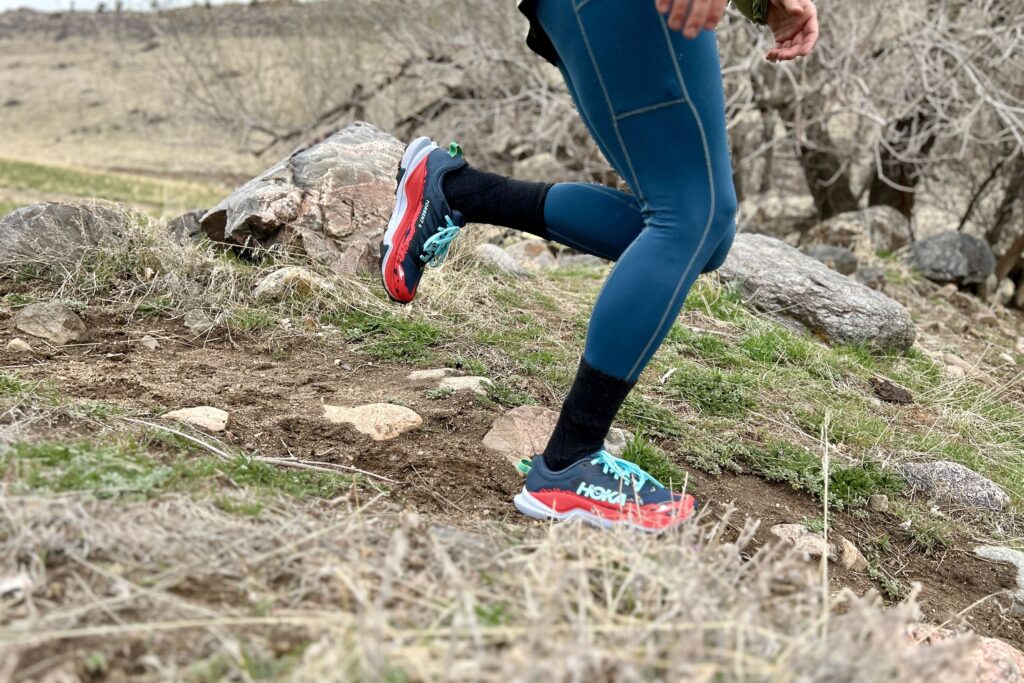
CUSHION
Cushioning is the next major consideration – and it’s highly subjective. Some runners prefer a plush, shock-absorbing ride, while others prioritize ground feel and responsiveness. The best approach? Test, test, test. We highly recommend trying on shoes with various stack heights, widths, and heel-to-toe drops until you find what best complements your stride. Runners covering firm or compact terrain tend to favor more cushioning, whereas folks taking on technical and complicated routes may want increased ground feel for precise steps.
VERSATILITY
Most of us aren’t switching shoes for every trail we hit. Unless you’ve got a multitude of runners for every type of landscape, we highly recommend going with a do-it-all pair that can transition from hard surfaces to soft and steep. No shoe will be a perfect fit for every route, but finding one that works for your go-to-terrain is key.
WATERPROOFING TREATMENTS
When it’s been rainy for days but you’ve still got to get on the trail, waterproof shoes are a great choice. They’re especially helpful during spring and fall days full of mixed rain, snow, and sun, as well as trails full of water. Due to their liner, waterproof shoes tend to feel a bit hotter, sacrificing breathability for water resistance. And keep in mind that “waterproof” requires maintenance – ongoing rain showers, slippery creeks, and deep puddles will eventually soak your feet. To keep your shoes sealed, you’ll need to regularly reapply a treatment so you can keep your feet happy and dry.
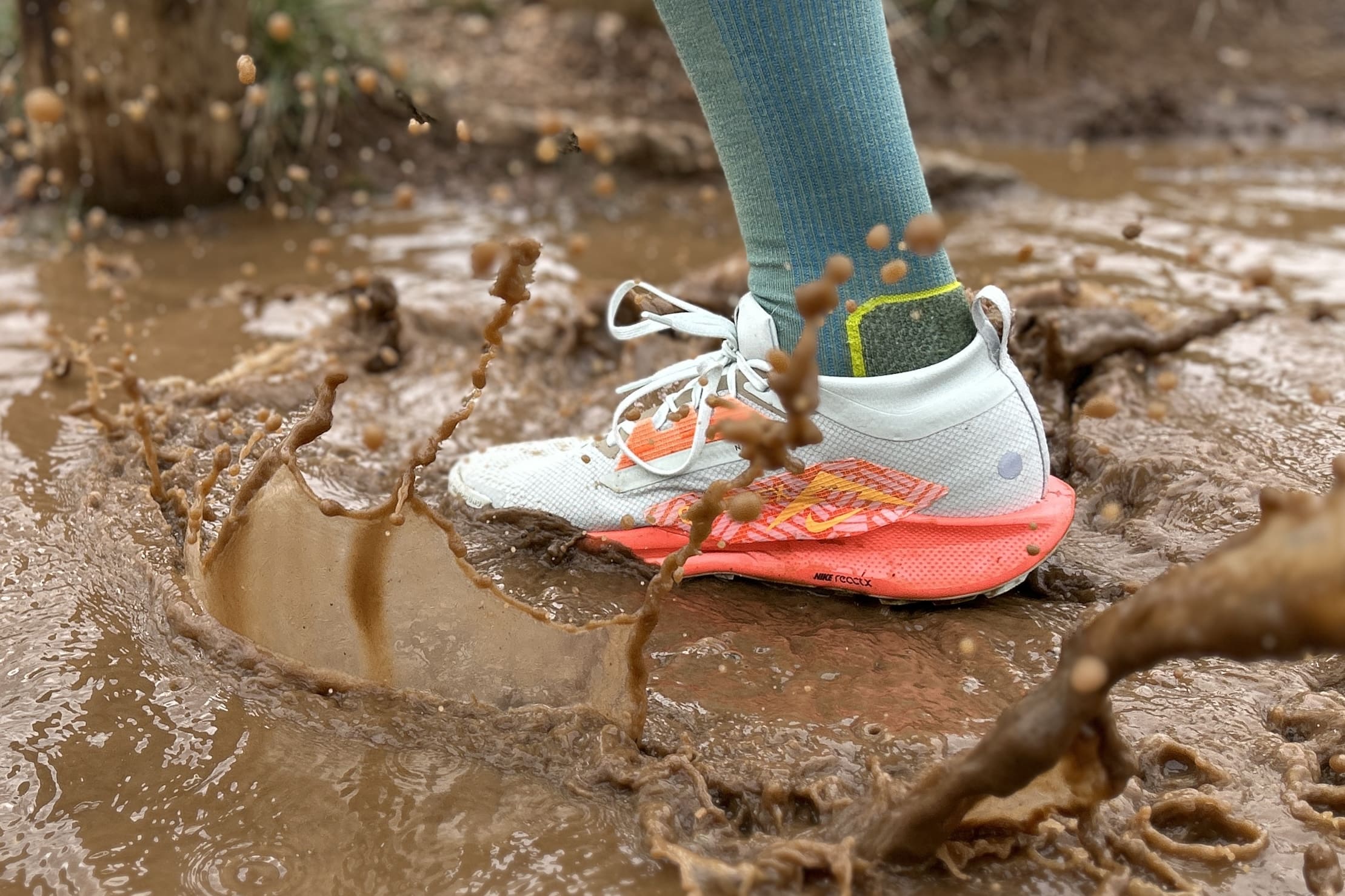
SOCKS
Quality socks can make all the difference between a fun, satisfying, and healthy run on trail and giving up halfway to hobble home with pain or blisters. Look for socks that are comfortable, durable, and made with materials like merino wool, polyester, and nylon. These fabrics effectively wick moisture away from your skin, dry quickly, and still retain their shape to avoid rubbing or hot spots. For reviews of our favorite socks for running and hiking, see our guide to the best hiking socks.
INSOLES
Aftermarket insoles can address a number of foot issues. If you’re dealing with chronic pain from issues such as plantar fasciitis, need support for a specific arch height, or simply want extra support in a rigid shoe, swapping out insoles is an easy solution. If you like a tighter fit or you’re in between sizes, new insoles are helpful for taking up a bit more room in your trail runners.
GAITERS
Gaiters are an excellent barrier to prevent gravel and sand from getting into your running shoes, as well as mitigate splashback from mud and water – all things that can cause irritation, pain, and blisters. That’s why we recommend a lightweight pair of gaiters to add a bit of extra protection while you’re racing along. Some shoes even have a Velcro gaiter attachment as well as a hook at the lacing saddle to keep gaiters close to the shoe.
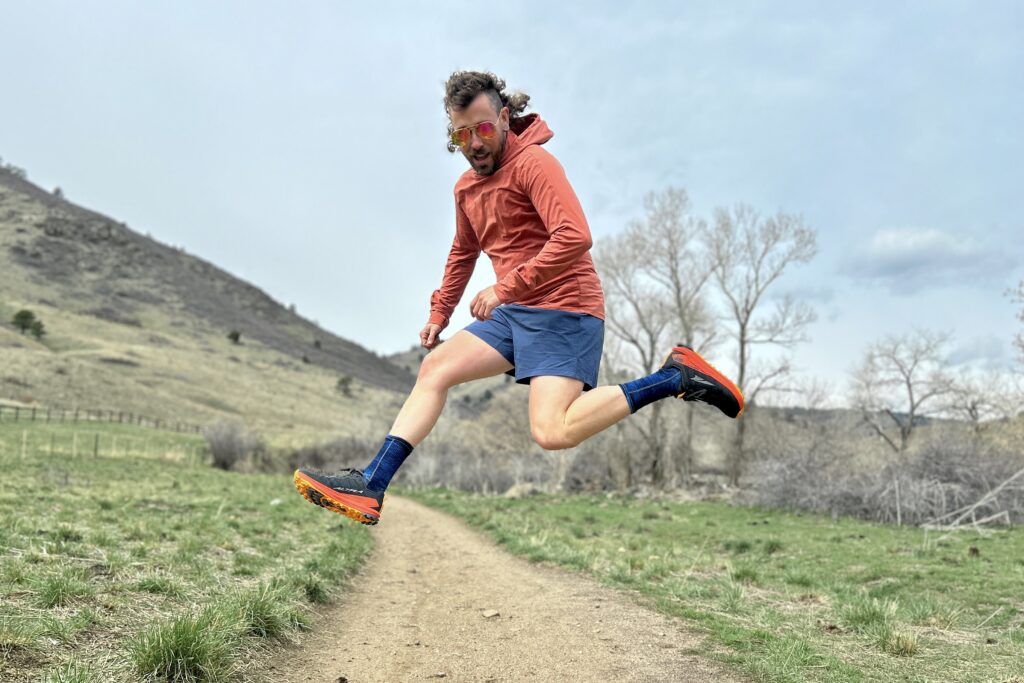
Conclusion
With so many trail running shoes out there, finding the right pair can feel overwhelming. But investing the time to get the best fit for your foot can make all the difference in how you feel and perform on the trail. Whether you’re chasing comfort, speed, or all-around value, we’re here to help you find your sole mate. Go get it!
